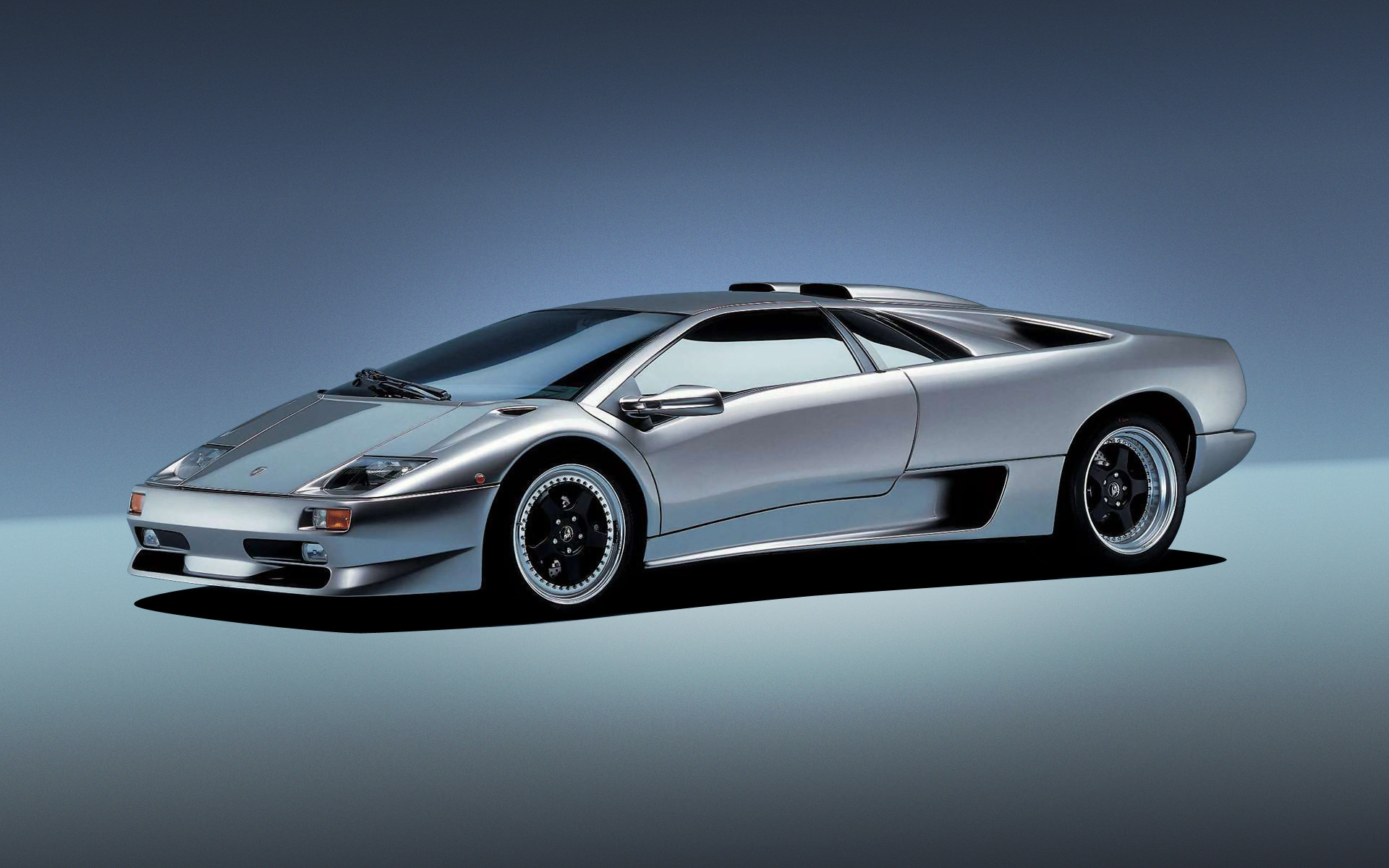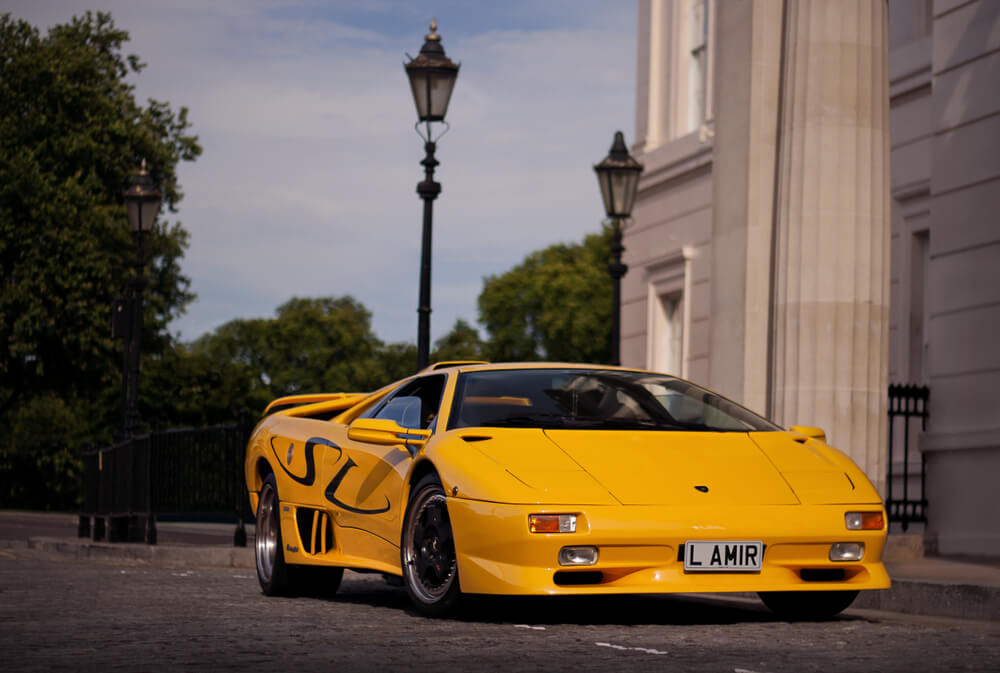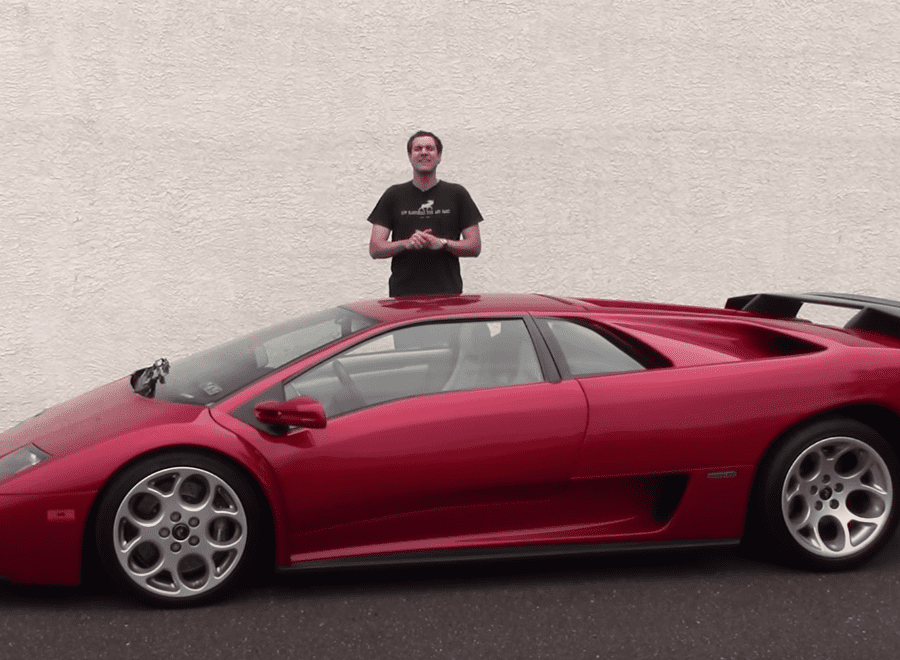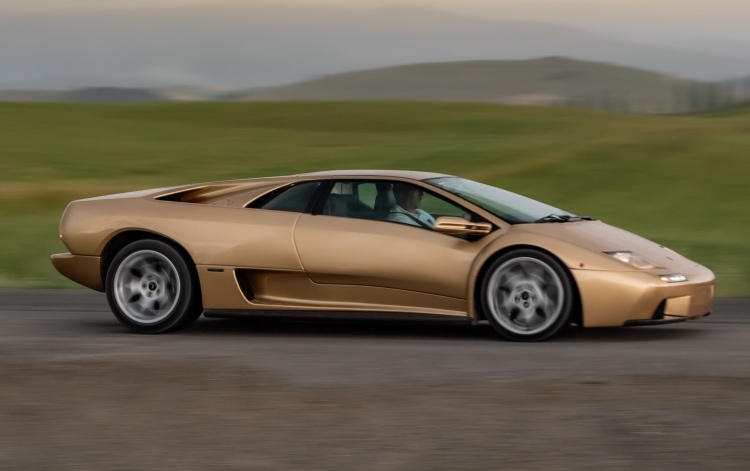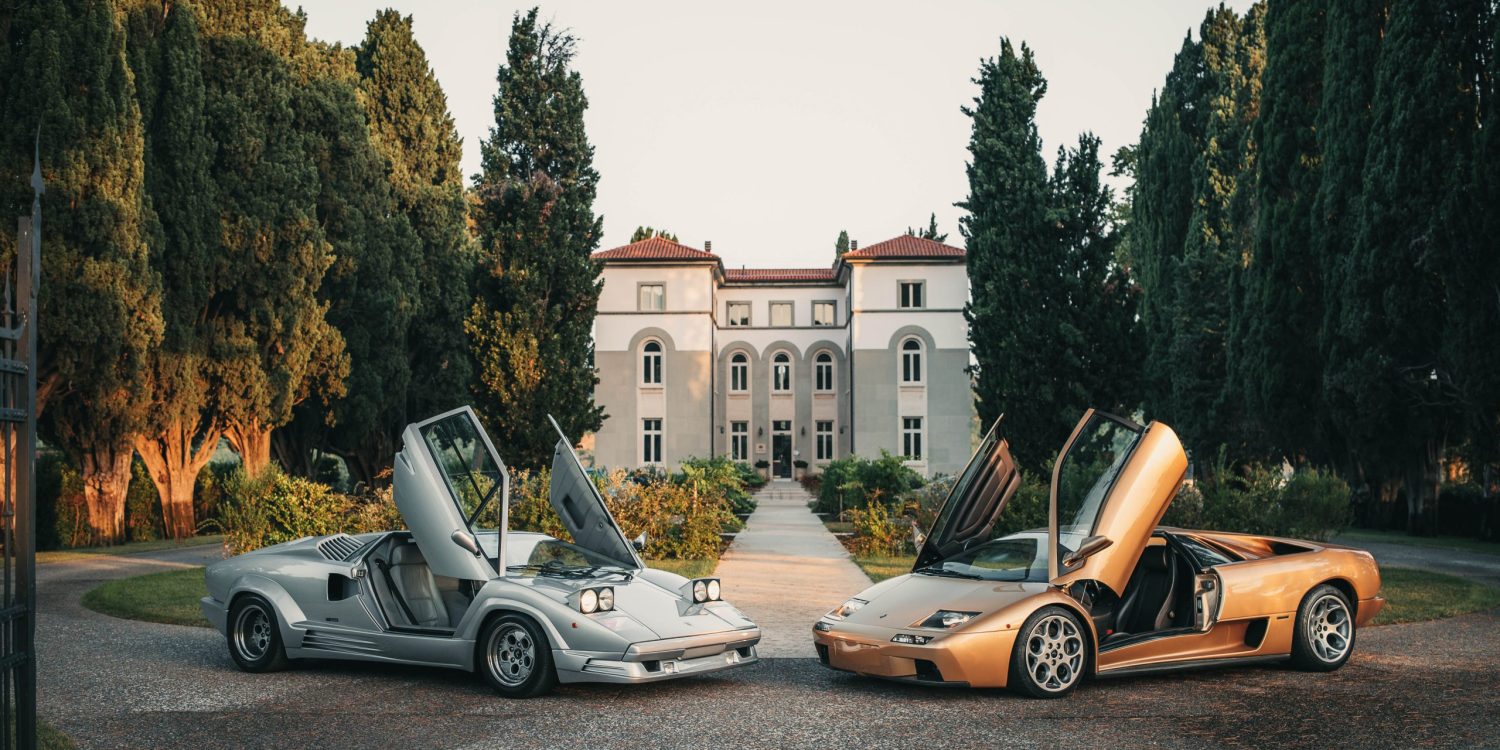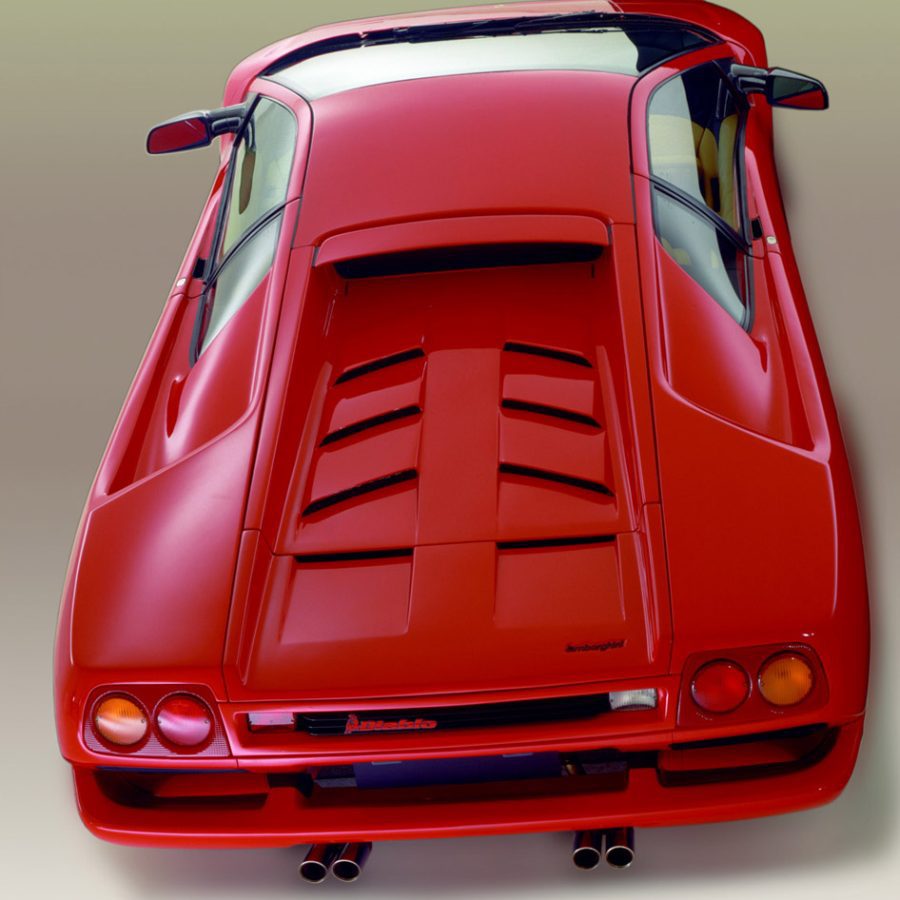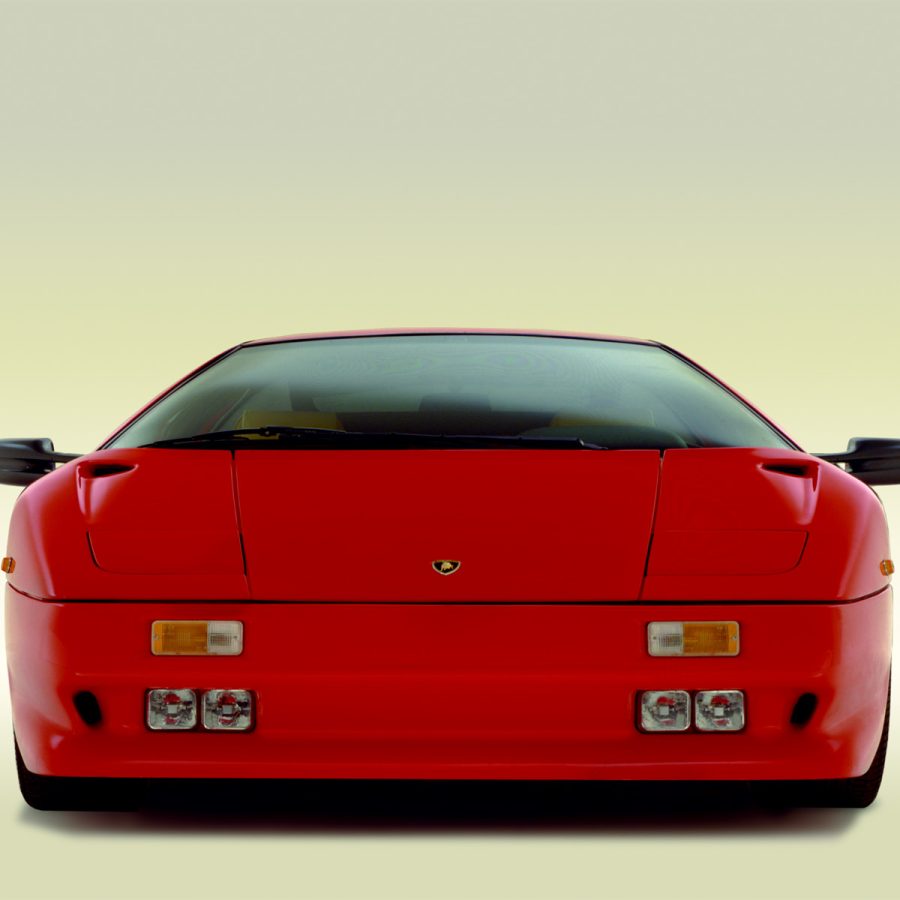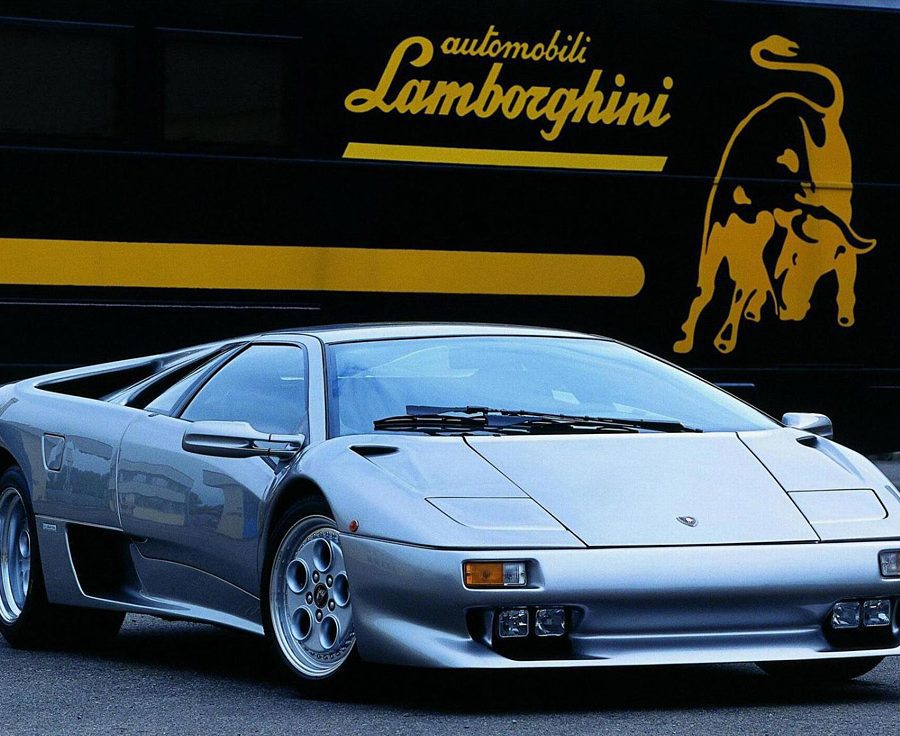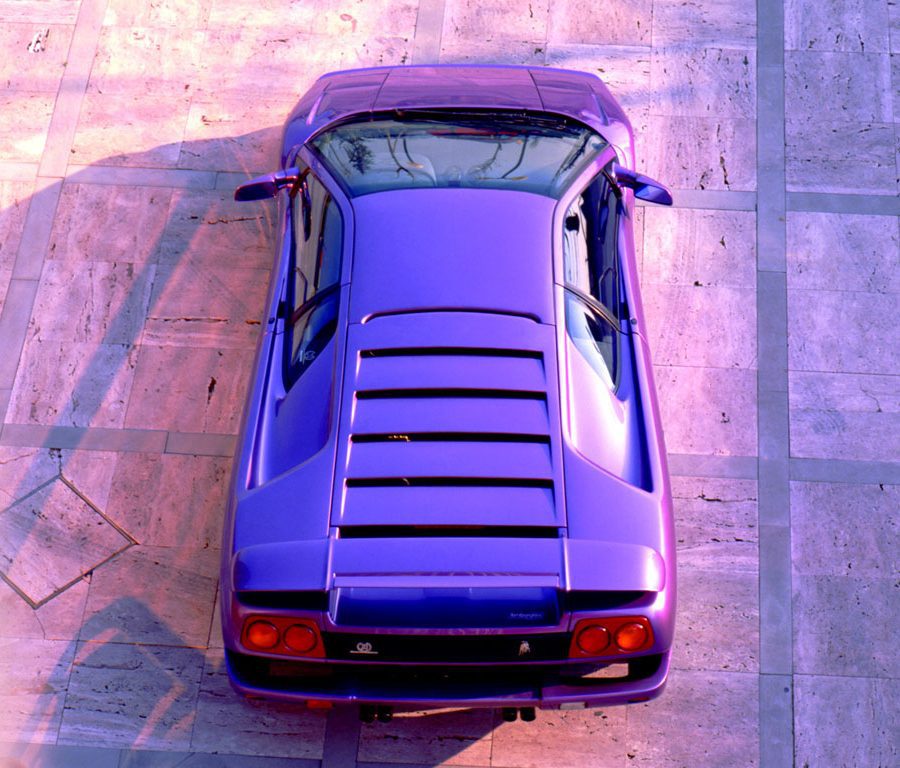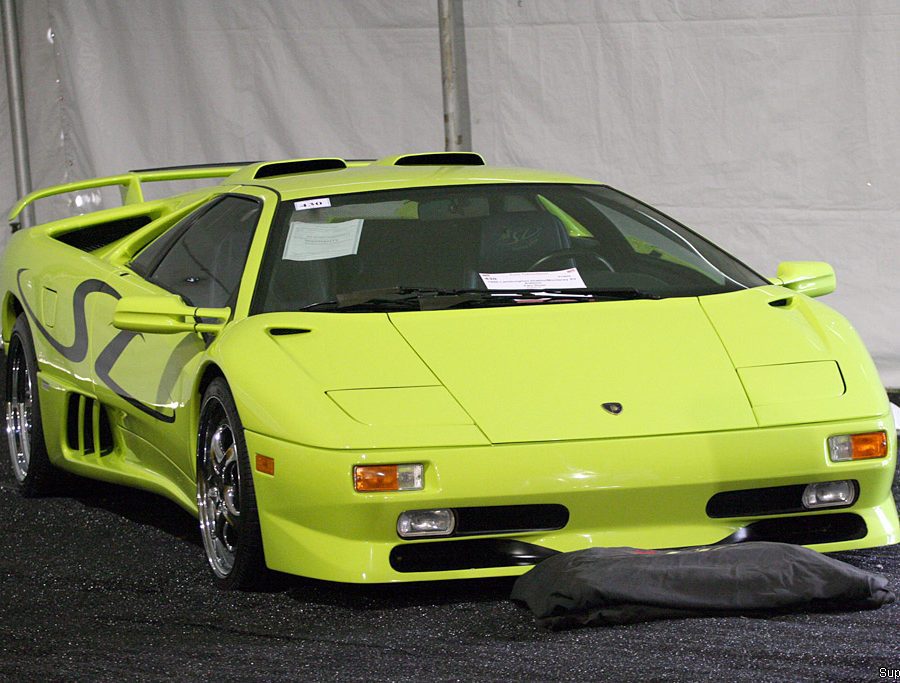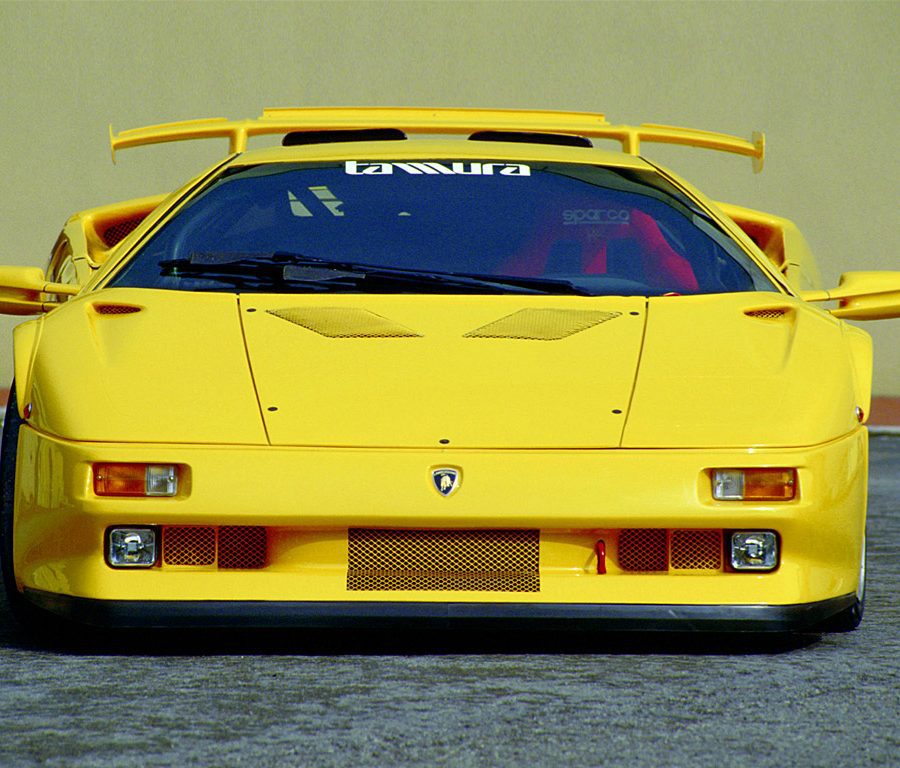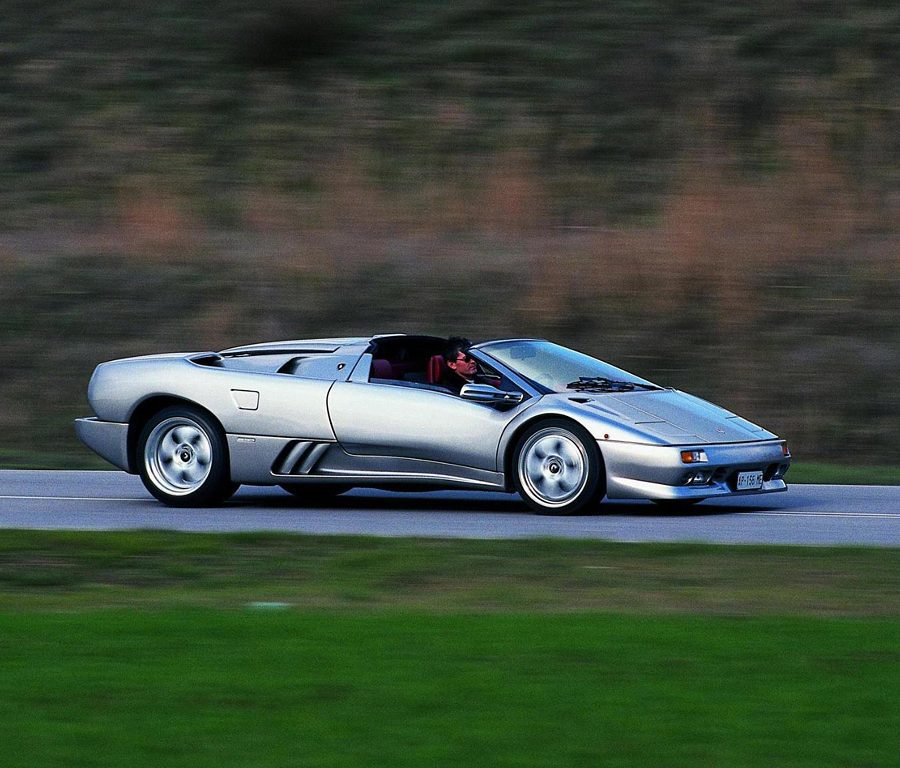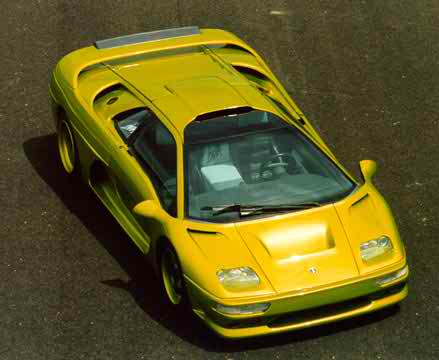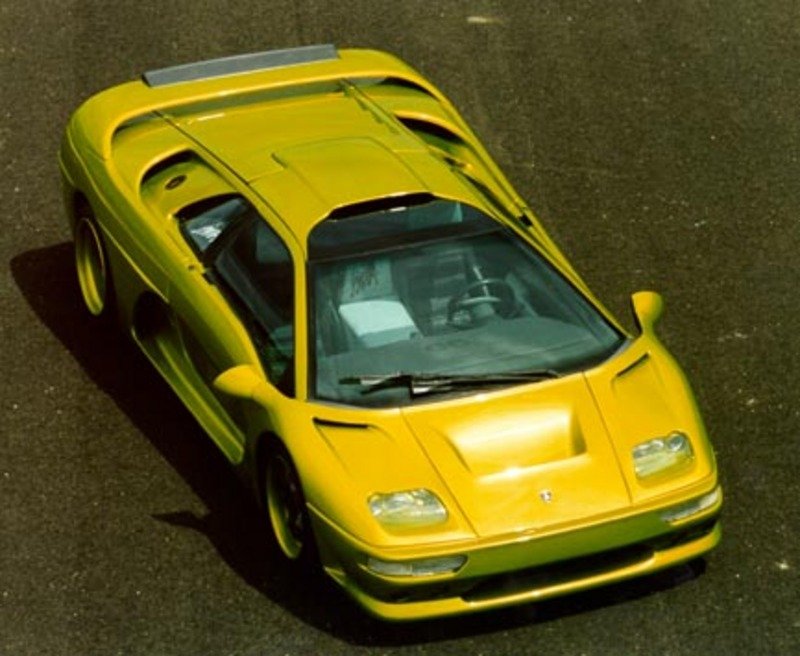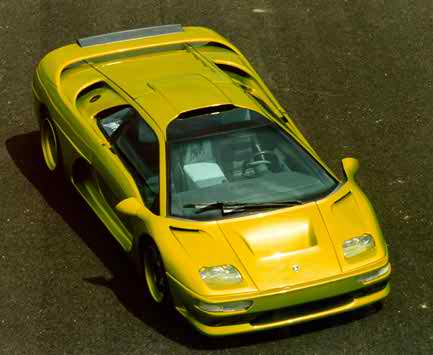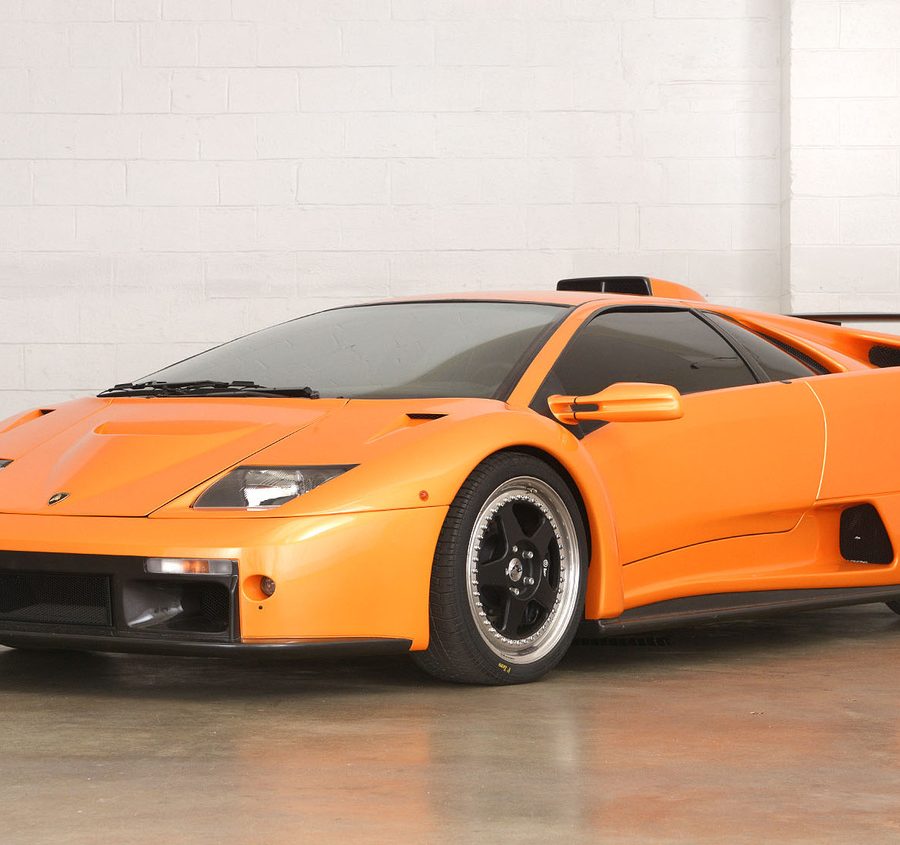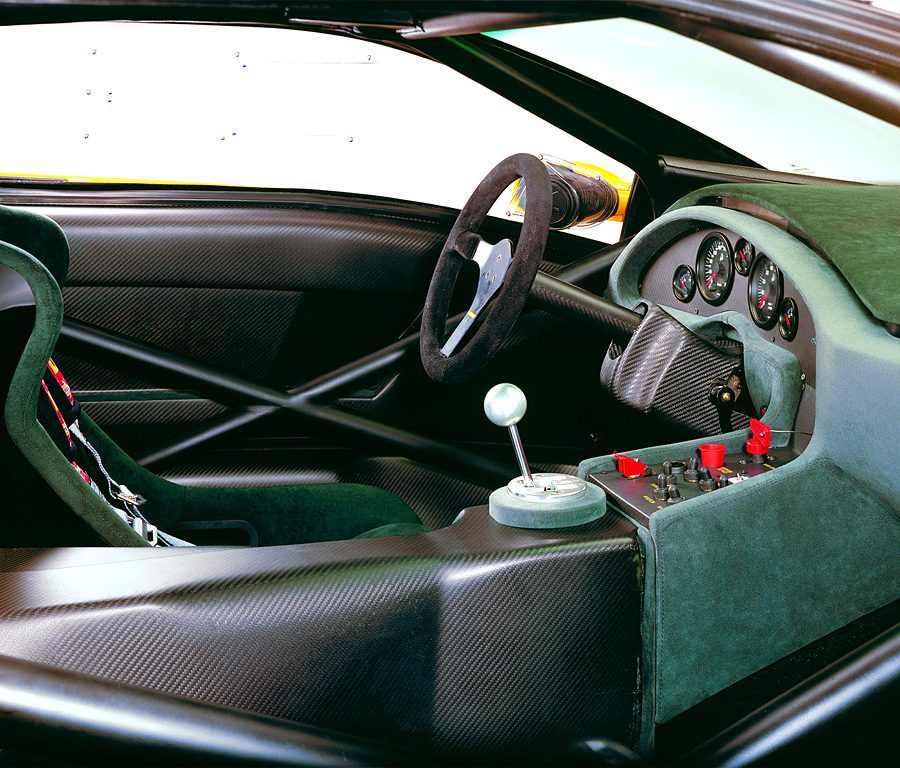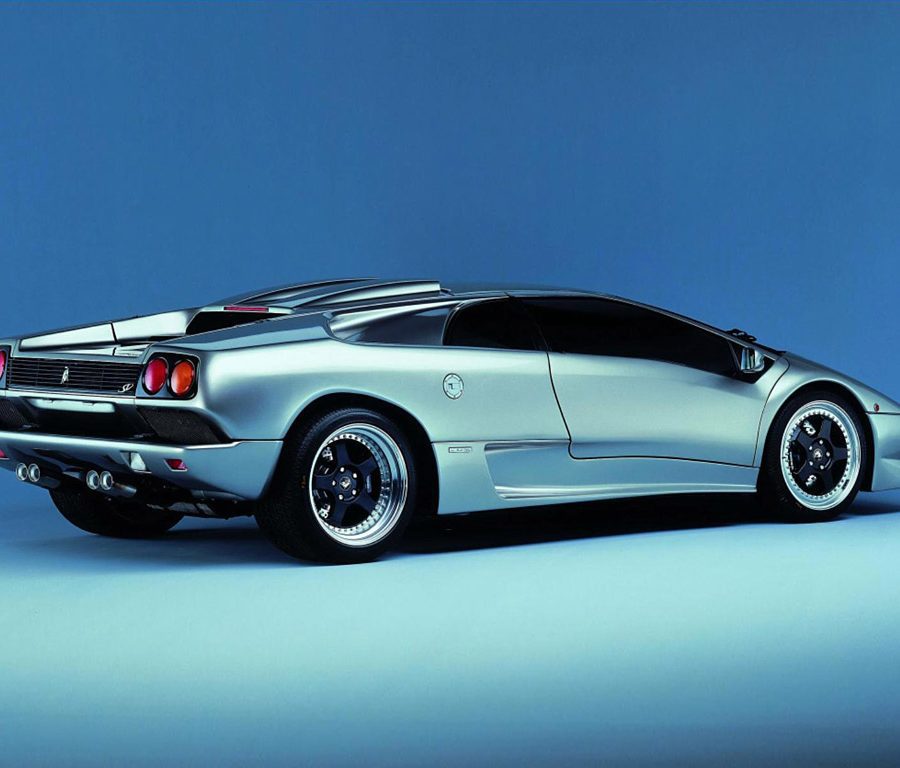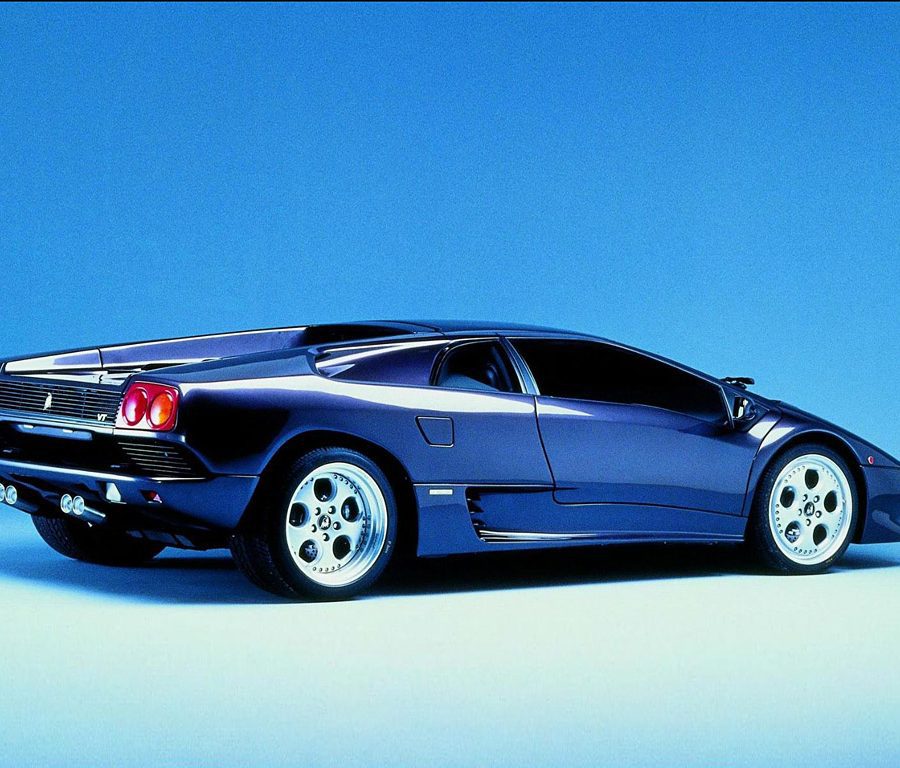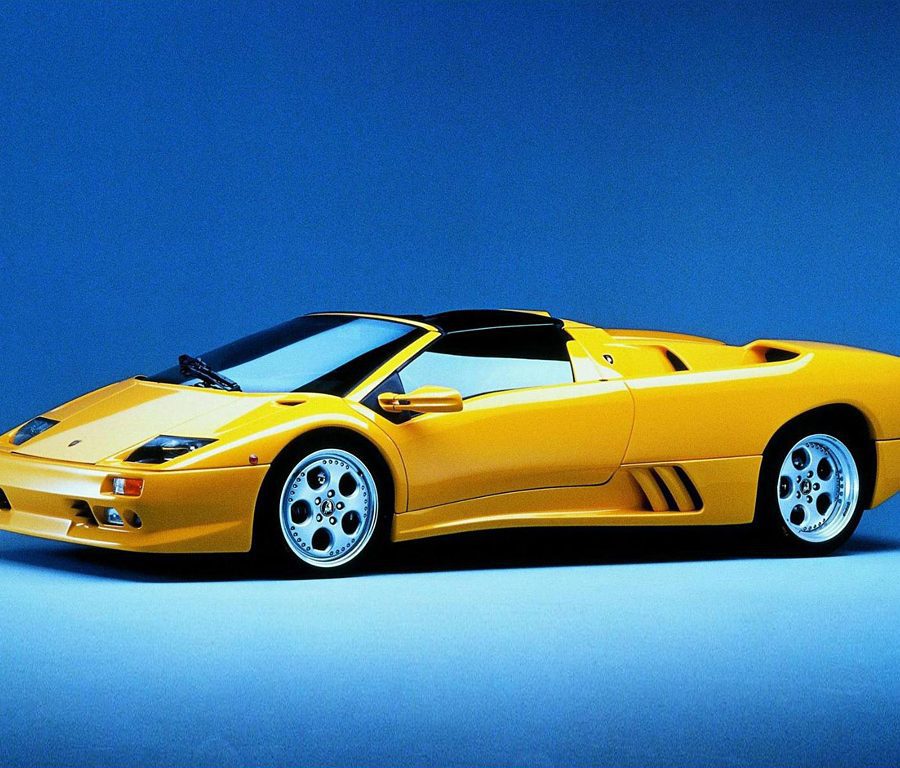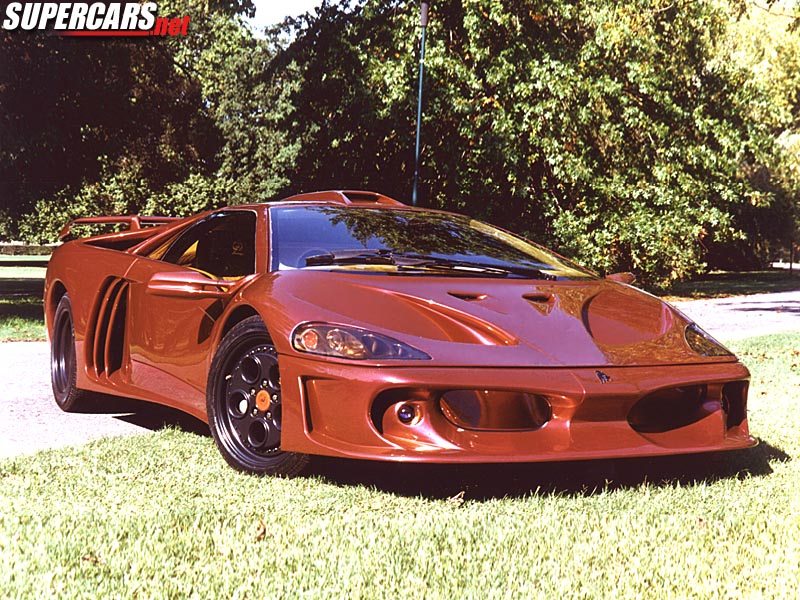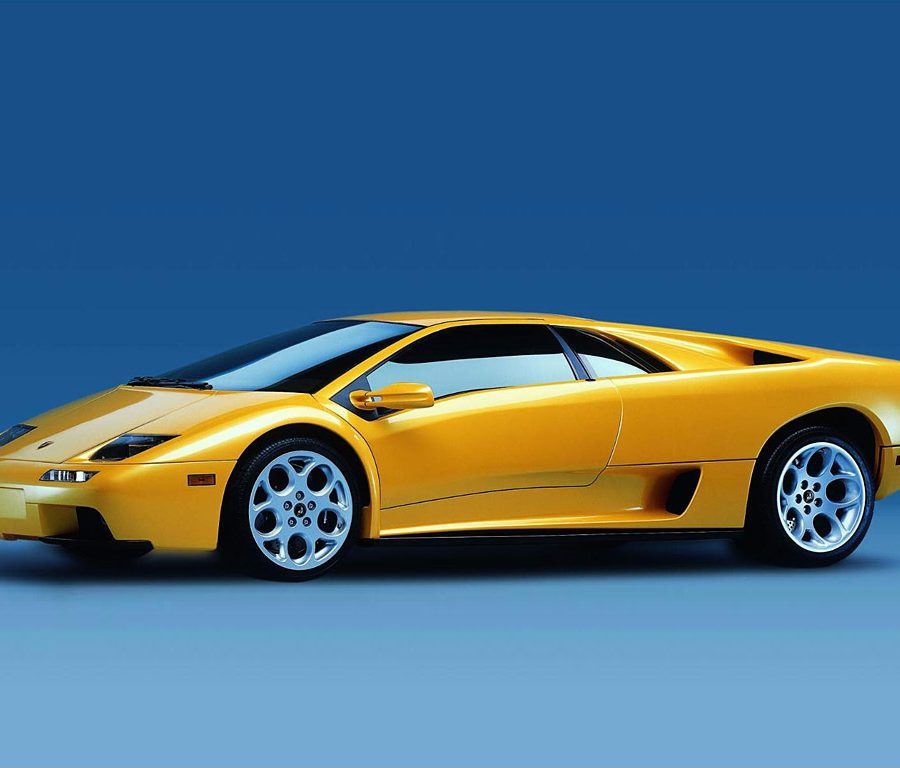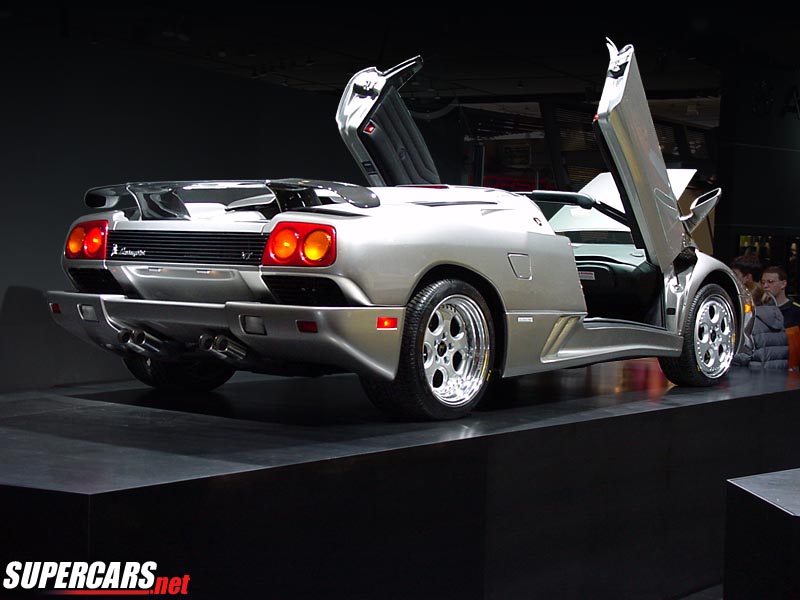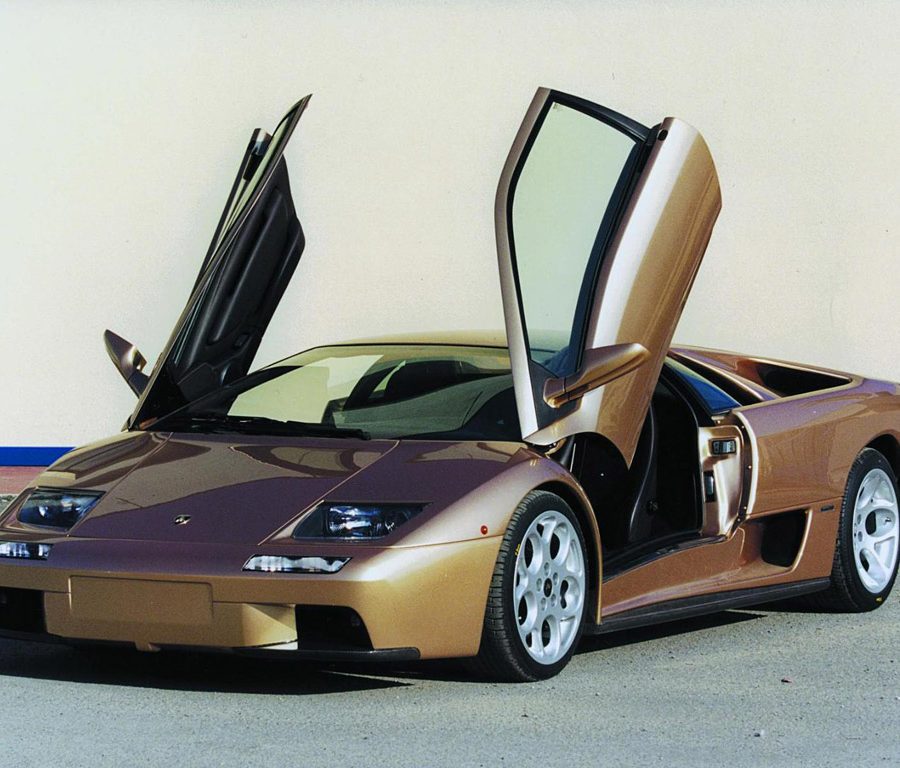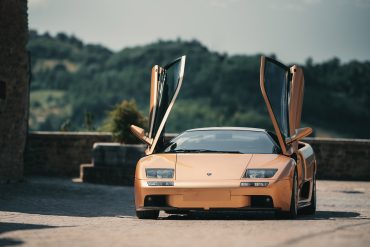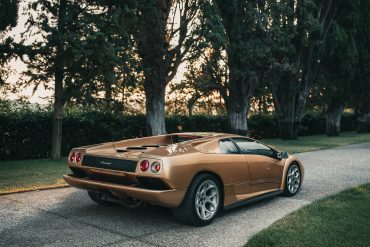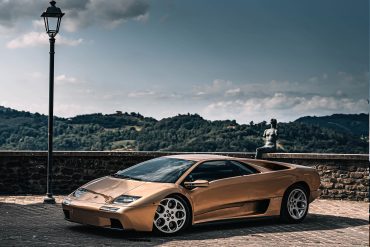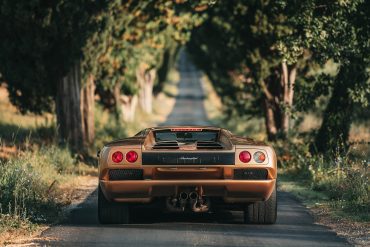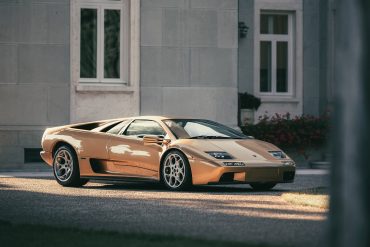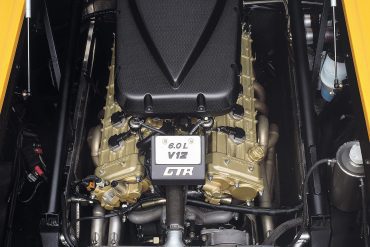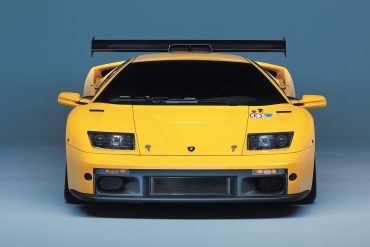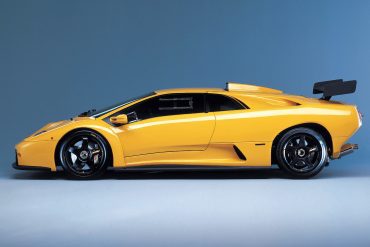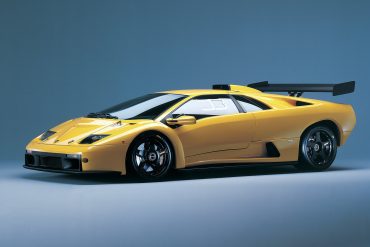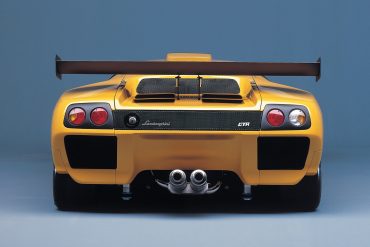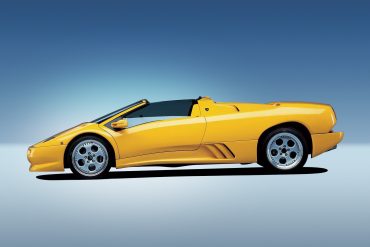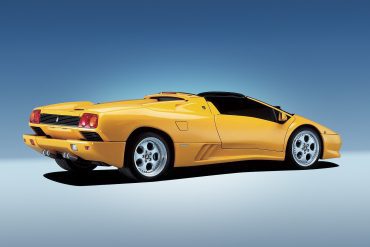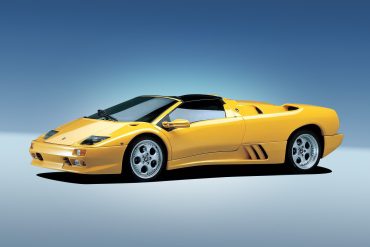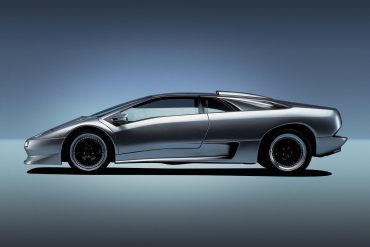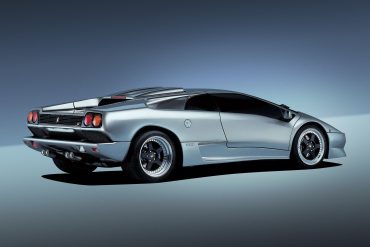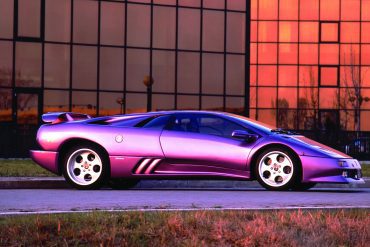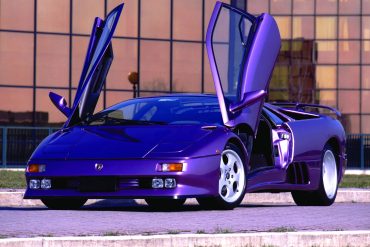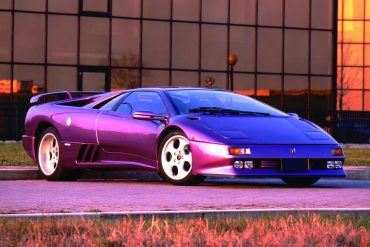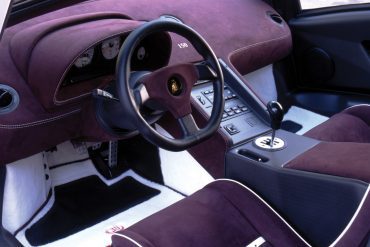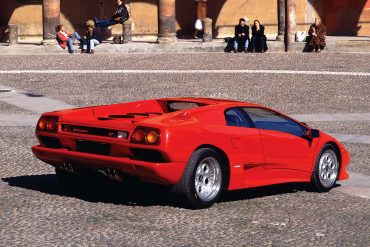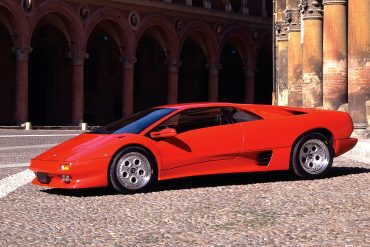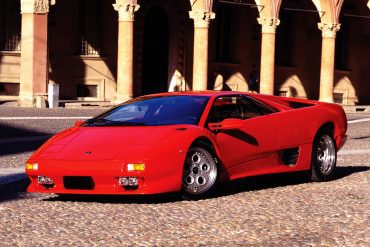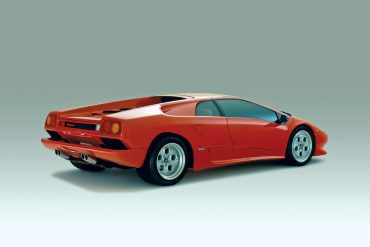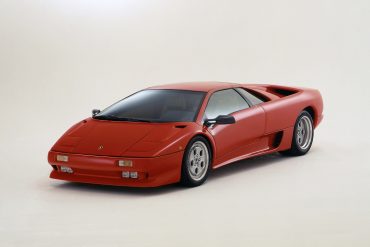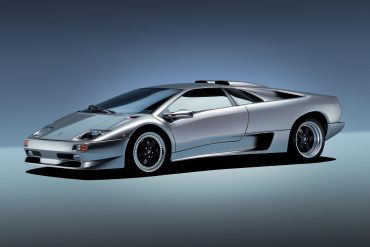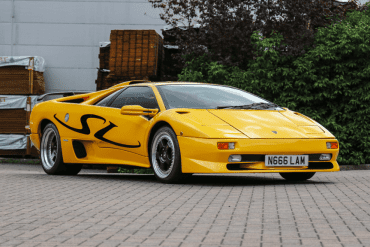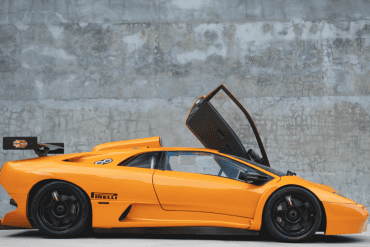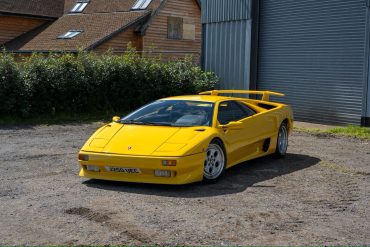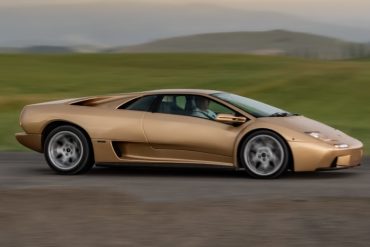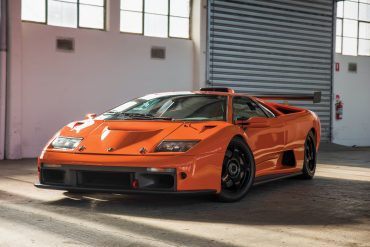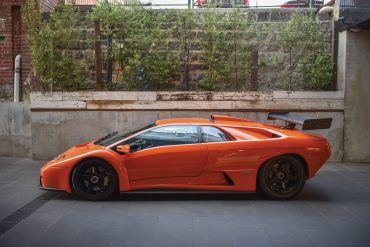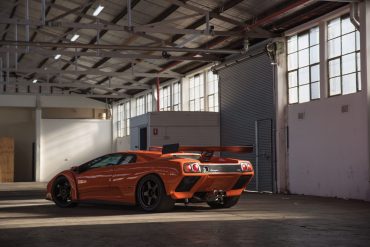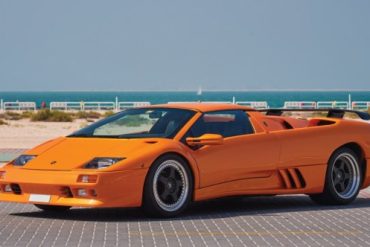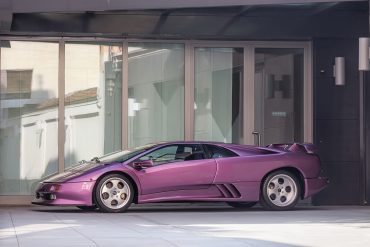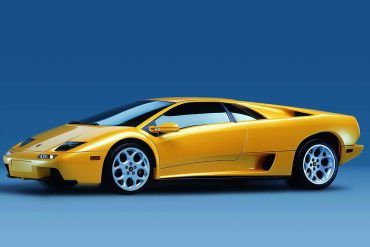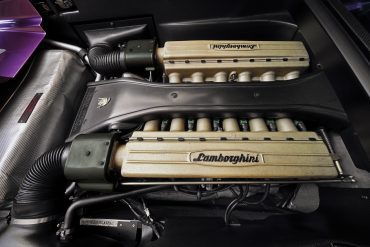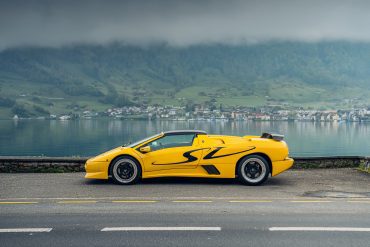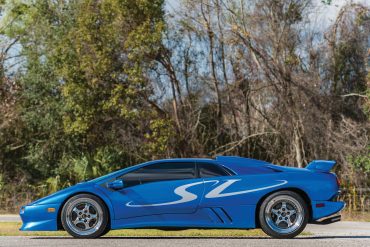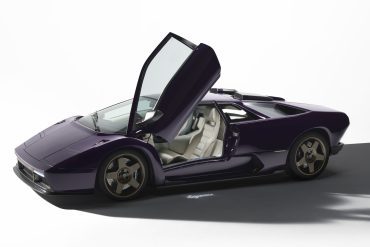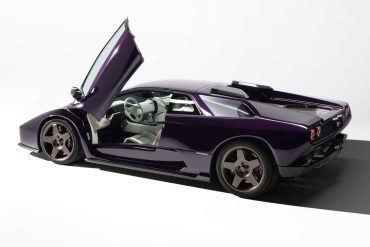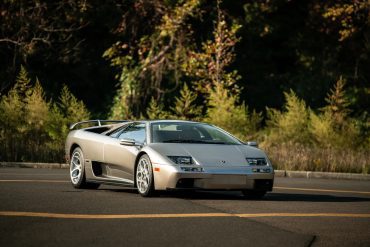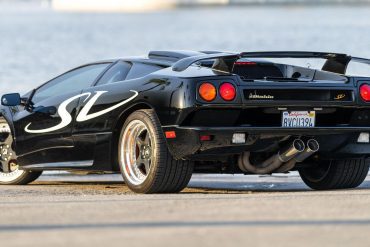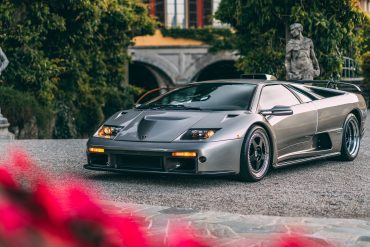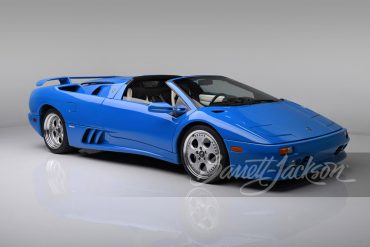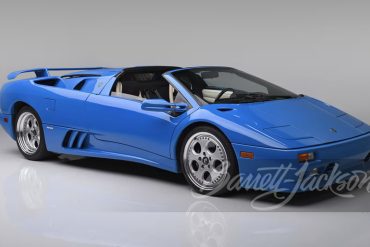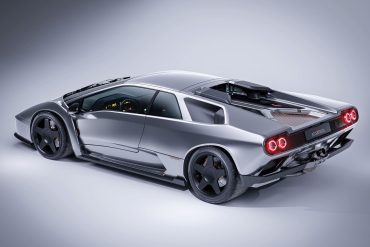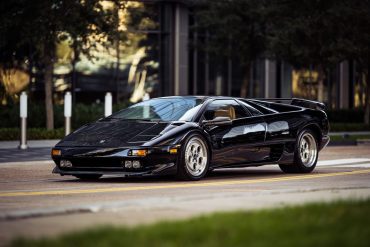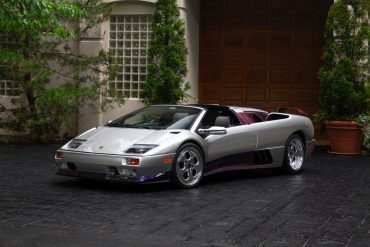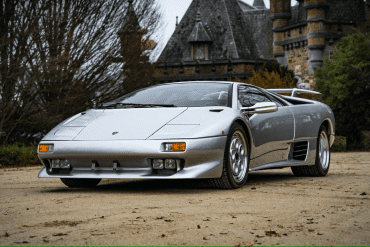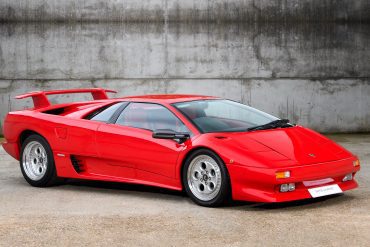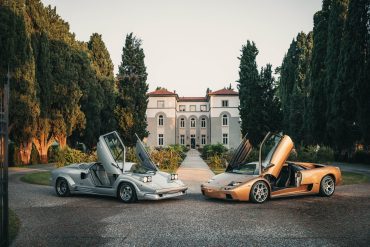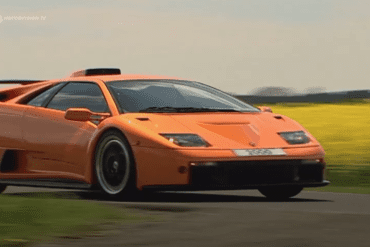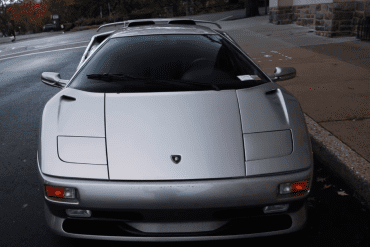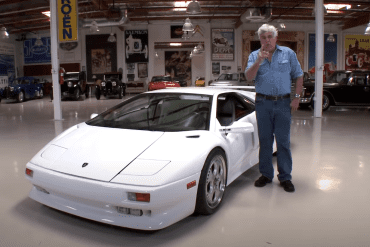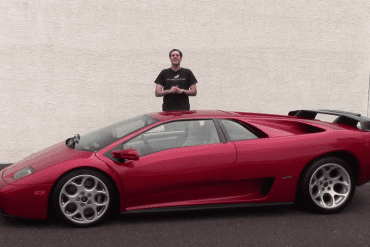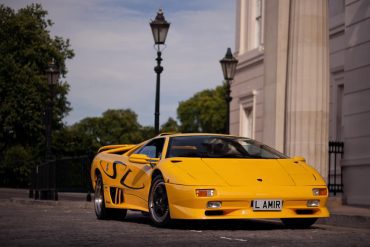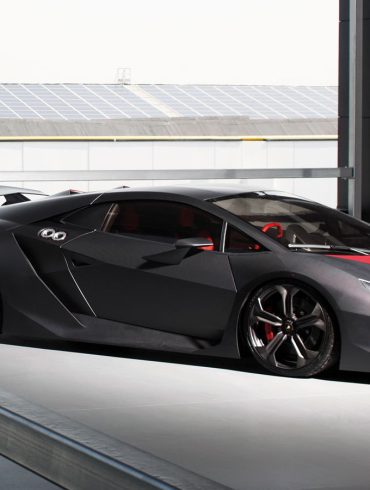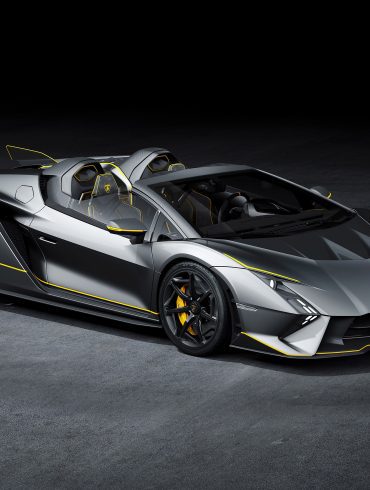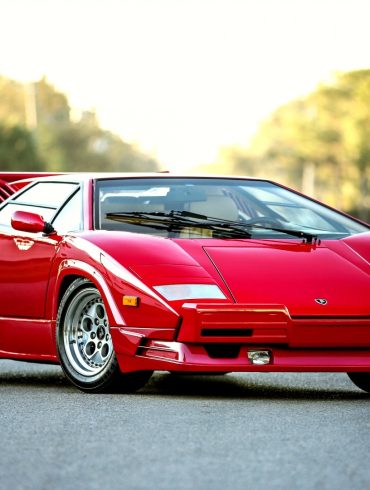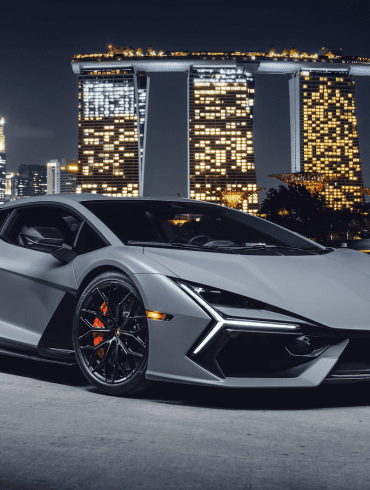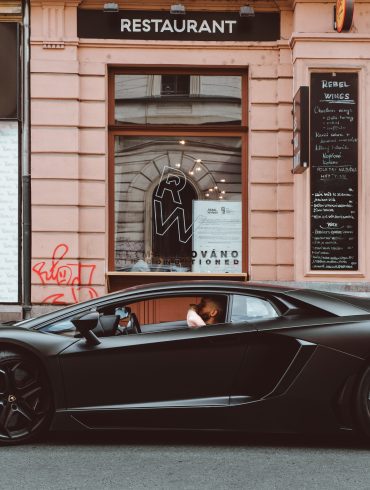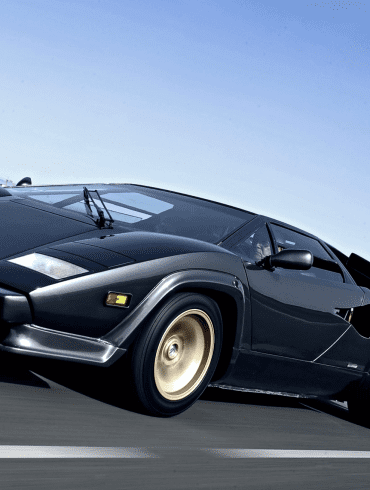Lamborghini Diablo
A Devilishly Good Supercar
1990 - 2001
The Lamborghini Diablo was launched in 1990 as the successor to the Lamborghini Countach. Chrysler bought Lamborghini in 1987 and the Diablo was developed under their stewardship. Like the Countach, the Diablo shape was penned by Marcello Gandini with design elements including the slant front end, steeply raked windscreen and scissors doors. The main directive for the Diablo was simple; its top speed had to be at least 315 kmh. To help, it got a 5.7 liter, four valves per cylinder V-12 engine with a newly developed multi-point fuel injection system. It was produced between 1990 and 2001 and sold almost 3,000 units. Several updates over the years improved the Diablo immensely and by 2001 it was considered a legitimate top-tier supercar.
Overview / Featured / The Story / Variants / Models In-Depth / Specs / Image Gallery / More Updates
Overview
In the echelons of automotive legend, few names stir the soul like the Lamborghini Diablo. Born from a lineage of groundbreaking design and engineering, the Diablo, which means "devil" in Spanish, was a tour de force that encapsulated the very essence of a supercar. Its reign from 1990 to 2001 marked a significant era in the automotive world, blending audacious performance with an aesthetic that was both menacing and mesmerizing.
The Genesis of a Supercar
The Diablo was tasked with a formidable mission: to succeed the iconic Countach. With this torch-passing, Lamborghini aimed not just to maintain its status quo but to eclipse its predecessor's legendary performance and design. The Diablo's development was a confluence of cutting-edge technology and visionary artistry, intended to propel Lamborghini into the future while honoring its storied past.
Under the hood, the Diablo was a marvel of engineering, initially equipped with a 5.7-liter V12 engine, delivering a jaw-dropping 485 horsepower and later models even surpassing this figure. This powerplant was a symphony of raw power, capable of catapulting the Diablo to 60 mph from a standstill in just over 4 seconds, with top speeds exceeding 200 mph — a feat that etched its name into supercar lore.
Design That Captivates
The Diablo's design was a masterclass in blending form and function, penned by the illustrious Marcello Gandini and later refined by Chrysler’s design team, adding a touch of refinement to Gandini's original aggressive lines. Its low-slung profile, scissor doors, and sharp, angular lines were the epitome of Lamborghini’s design ethos, creating a car that looked as fast and fierce as it drove.
The interior of the Diablo was a fusion of luxury and sportiness, with a cockpit designed to envelop the driver in a world of high-performance indulgence. Despite its race-car-like performance, the cabin was outfitted with the luxuries of the time, including leather upholstery, air conditioning, and an advanced sound system, reflecting the dual nature of the Diablo as both a performance machine and a status symbol.
A Legacy Cast in Performance and Prestige
Throughout its production run, the Diablo evolved through various iterations and special editions, each amplifying its performance capabilities and luxury features. From the SE30 to the VT Roadster, and ultimately to the fearsome Diablo 6.0, each model pushed the boundaries of what was technically and aesthetically possible, cementing the Diablo's status as a supercar of unparalleled stature.
The Lamborghini Diablo was more than just a fast car; it was a statement, a manifestation of extreme automotive ambition and the quintessence of Lamborghini's brand ethos. Its production might have ceased, but its legacy endures, continuing to captivate enthusiasts and collectors worldwide. Its influence is evident in the design and engineering principles that have guided Lamborghini's models since, a lasting tribute to an era when the Diablo reigned supreme as the king of the supercar world.
Lamborghini Diablo Basics
Manufacturer: Lamborghini
Production Yrs: 1990 - 2001
Production Units: 2,884 units
Assembly: Sant'Agata, Italy
Layout: Longitudinal, Rear mid-engine, RWD/AWD
Engine: 5.7L - 6.0L V12
Original price: US$239k
Did You Know?
Chrysler owned Lamborghini during the Diablo's development, leading to some unexpected influences. The Diablo's side mirrors were reportedly used on the Dodge Viper!
The Diablo was among the last supercars to feature pop-up headlights before stricter safety regulations phased them out.
From a platform perspective, the Diablo was merely an enhancement of the Countach. It still had a spaceframe chassis, aluminium body and transmission layout that was largely unchanged, with the exception that the new car gained more length, width and wheelbase as well as a touch more cabin space.
“The Diablo isn’t merely the best Lamborghini ever made, it is also a car that transcends its own eccentricity to achieve true greatness.”
Car and Driver
The Story. Lamborghini Diablo History & Evolution
Diablo FAQ
Lamborghini Diablo prices when new?
In the United States, a brand new Lamborghini Diablo would set you back US$239,000 when it first launched. Notable extra included the factory fitted luggage set (priced at $2,600) and an exclusive Breguet clock for the dash (priced at $10,500). Later Diablo models like the SV redesign retailed for USD$248,700, while the most expensive Diablo when new was the Diablo GT at US$300,000.
Lamborghini Diablo prices currently?
Average price today for a Diablo is anywhere from around US$100,000 to upwards of $250,000 for the limited edition stuff. Average based on recent auction results for an early 1991 in decent condition is $117,000.
Lamborghini Diablo 0-60 times?
If you check out our specs area on this page you will see that the Diablo was originally good for a 0-60mph sprint in around 4.5 seconds. Over time, with several updates and better traction, the times dropped really quickly. The Diablo SV was the first Diablo to drop below a 4 second 0-60 mph time (3.8 seconds), while the final Diablo VT 6.0 SE also did it in 3.8 seconds.
Lamborghini Diablo top speed?
The Diablo was good for more than 200 mph from the year it was launched. The factory said 202 mph top speed was the limit but several magazines got the original Diablo up to 210 mph. By the end of production the Diablo was being limited in top speed to around 205 mph due to tire technology, with many saying it was able to hit 220mph due to its slippery shape technically.
During its 11 years life, Diablo evolved gradually with several variants and updates, but overall the Diablo’s production dropped gradually each year.
The first derivative of Diablo was the VT, which stood for "Viscous Traction". It was simply the 4-wheel drive version of Diablo. A simple viscous coupling transferred power to the front wheels whenever the rear wheels slipped. This improved its wet weather handling a lot, although on the dry it suffered from some understeer. The 4WD hardware added about 50 kilograms.
The hottest Diablo in 1995 was SE30, which was a special edition for celebrating the 30 years anniversary of Lamborghini. Modifications included reducing weight by more than 220 lbs thanks to the use of magnesium wheels, carbon-fiber engine lid and rear spoiler, less equipment, thinner cabin trim and racing bucket seats. A revised engine management system increased output to 525 hp and with adjustable anti-roll bars and better cooling thanks to a new front bumper this Diablo was much better to drive. With only 150 units made, a very small portion received the "Jota" specifications tuning. Its V12 engine received variable intake ducts, variable exhaust, racing-style cams and a pair of ram-air intake at the roof, the latter would be carried over to the SV. Output was boosted too. Unfortunately the Jota did not comply with emission regulations in EU and USA.
The designation "SV" stood for "Super Fast" in English. It originally appeared in Miura P400 SV. By 1995, Lamborghini resurrected the name on a new Diablo. The Diablo SV was tuned to be more race car than roa car. Many magazines liked its firmer and crisper suspension setting, stronger brakes and shorter final drive which aided acceleration. They regarded it as the best handling Diablo even overshadowing the SE 30.
Bigger valves, faster cams and Jota-style ram-air intakes helped increasing power to 510 hp while a striped out cockpit helped reducing kerb weight to 1570 kg. As a result, the SV stood between SE30 and the standard Diablo in terms of power and weight. However, it was a lot cheaper than the SE 30 and even cheaper than the standard car, thanks to the short standard equipment list. Shorter final drive ratio led to the lowest top speed among all brothers, 186mph. Nevertheless, with the much improved handling, who cared about the nonsense top speed ?
In early 1998, Diablo SV was upgraded with an improved engine. The V12 gained a two-stage variable valve timing at inlet valves. Power increased to 530hp while torque was up from 428 lbft to 450 lbft. Moreover, the VVT enabled more torque at lower rpm, thus in-gear acceleration was much improved. Other improvements included bigger brake discs - 355mm up front and 335mm at the rear. As a result, larger 18-inch wheels were employed to accommodate the brakes. Besides, ABS and airbags were finally available to Lamborghini !
In 1999, the whole Diablo family received some minor modifications. Although engine and performance remained unchanged, there was a completely redesigned interior which featured a simpler instrument for easier reading. Passenger's airbag was added near the new glovebox. The only mechanical change was the addition of electronic adjustable dampers. All Diablos, including the standard Diablo, VT and Roadster, now shared the SV's variable valve timing engine. For SV, the "SV" sweeping graphics which used to be featured at the sides were deleted.
Being the street version of the GT2 race car, Diablo GT was the fastest ever Diablo and our favorite. The V12 was bored out to a full 6 liters. Accompanied with lightweight titanium connecting rods, faster-timing camshafts, individual throttle for each cylinder and enlarged ram-air intakes at the roof, power jumped while max torque increased too. The GT weighed 1490 kg in dry, 80kg lighter than SV. All body panels, excluding aluminium doors and steel roof, were made of carbon-fiber. In the engine compartment, intake manifolds were made of magnesium, which improved weight distribution to 40:60. Besides, Lamborghini also widened the front track by 110 mm, revised front suspension geometry, stiffened the springs and softened the dampers. The result was more high-speed stability and quicker turn-in at low speed. It was rare too, with only 80 units built.
Because the L147 project (which would become Murcielago) was being re-evaluated by new owner Audi, the Diablo had to receive one more update in year 2000 to fill the time gap. The 6.0 VT was the result. Audi designer facelifted the body, mainly in nose and tail. Now nearly the whole body was made of carbon-fiber panels, with the exception of aluminium doors and steel roof. Magnesium was used in cylinder heads, intake manifolds and the 18-inch wheels. Nevertheless, dry weight still went up to 1625 kg because of the compulsory 4WD and quite a lot of standard equipments.
The V12 was bored out to 6.0 liters, in addition to titanium connecting rods (from Diablo GT), lighter crankshaft, individual coil-on-plug ignition and two-stage variable exhaust (for complying noise regulation without losing power), it was conservatively rated at 550 hp and 458 lbft. Compare with GT, it didn’t have the ram-air intake on the roof (hence saving a rear-view camera) and hotter cam timing.
Like the GT, the 6.0 VT got wider tracks front and rear. In particular, there was 60 mm added to the front to improve turn-in response as well as stability. However, it didn’t steer as sharp as the lightweight SV, especially the viscous-coupling 4-wheel drive introducing quite an amount of understeer approaching the limit. In terms of performance, most road testers thought it was slower than the SV, blamed to extra weight it carried.
Interior was trimmed with carbon-fiber while position of pedals and gear lever were also improved a little bit. Undoubtedly, the final Diablo was the most friendly and the best built among all, thanks to the involvement of Audi.
Lamborghini Diablo Variants
Several updates over the years improved the Diablo immensely and by the end of its production run it was considered a legitimate top-tier supercar. Below, we take you through the models, history and specs as well as anything else you could ever want to know about the Lamborghini Diablo. After three years of making minor adjustments to the standard Diablo, Lamborghini decided in 1993 that a second, even more specialized version of the car could add new customers to the brand, launching the Diablo VT. From there, it continued to tinker.
Initial (1990-1998)
Diablo (1990-1998)
Diablo VT (1993 - 1998)
Diablo SE30 (1994)
Diablo SE30 Jota (1994)
Diablo SV (1996 - 1999)
Diablo VT Roadster (1996 - 1998)
Update/Facelift (1998-2001)
Diablo SV (1999)
Diablo VT (1998 - 2000)
Diablo VT Roadster (1998 - 2000)
Diablo VT Roadster Millennium (2000)
Diablo GT (1999)
Diablo VT 6.0 (2000 - 2001)
Diablo VT 6.0 SE
Race Specials
Diablo Jota (1995 - 1996)
Diablo GT1 Stradale (1997)
Diablo SV-R (1996 - 2001)
Diablo GT2 (2000-2002)
Diablo GTR (2000)
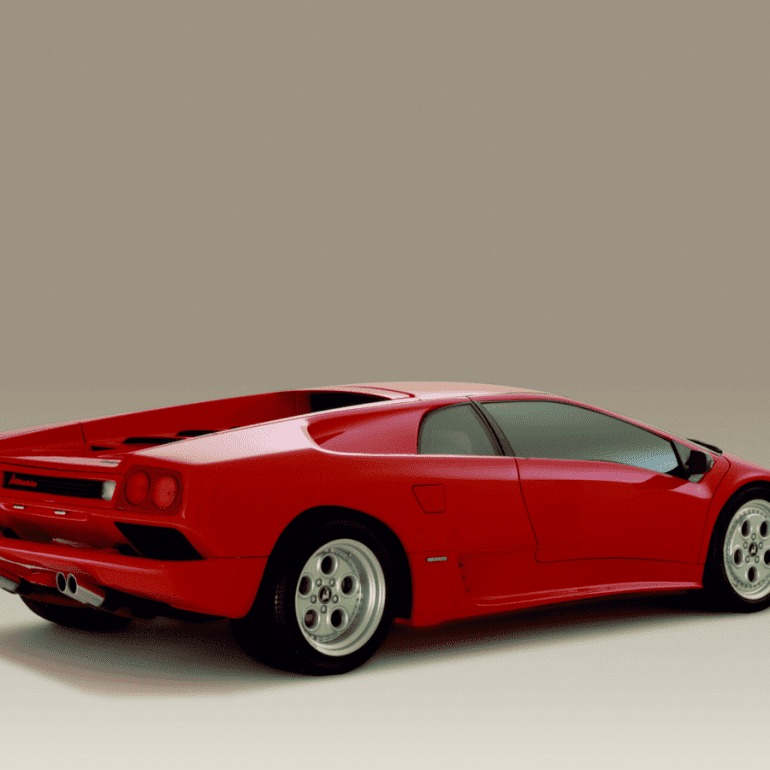
Lamborghini Diablo
Years: 1990 – 1998
Units: ~ 900 units
Engine: 5.7L Nat Aspirated V12
Power: 485 bhp @ 6,800 rpm
Torque: 428 ft lbs @ 5,200 rpm
0-60 mph: 4.5 seconds
Top Speed: 202 mph
Owners started taking delivery of the Diablo in June 1990, five years after the start of the project. The Diablo sold well and was loved by the press. Only faults were heavy steering and heavy operation clutch.
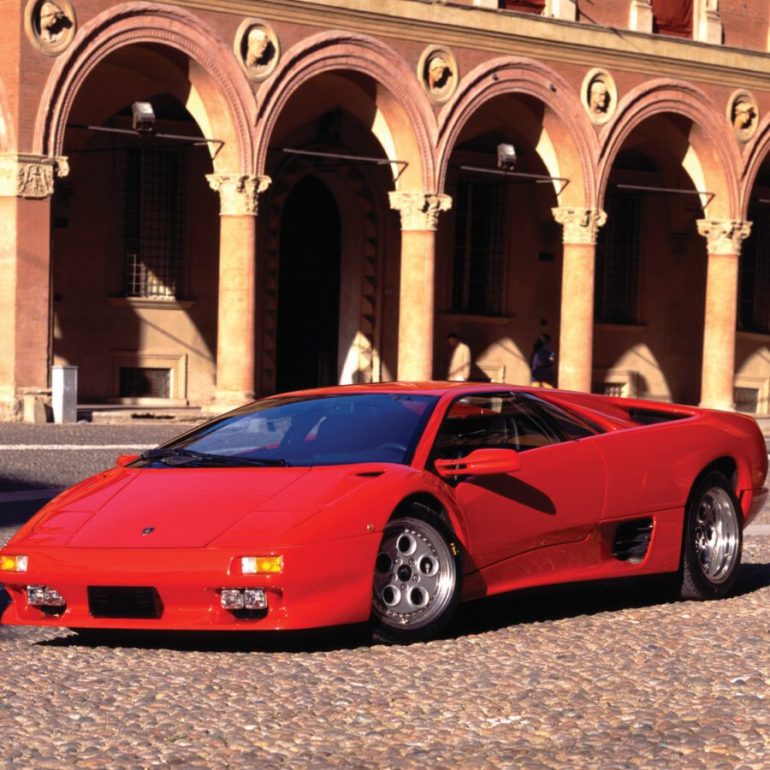
Lamborghini Diablo VT
Years: 1993 – 1998
Units: ~ 400 units
Engine: 5.7L Nat Aspirated V12
Power: 492 bhp @ 7,000 rpm
Torque: 428 ft lbs @ 5,200 rpm
0-60 mph: 4.1 seconds
Top Speed: 204 mph
The biggest difference with the Diablo VT and earlier versions was the addition of all wheel drive for the first time. It had a viscous center diff that could transfer up to 25% of the torque to the front wheels to improve traction.
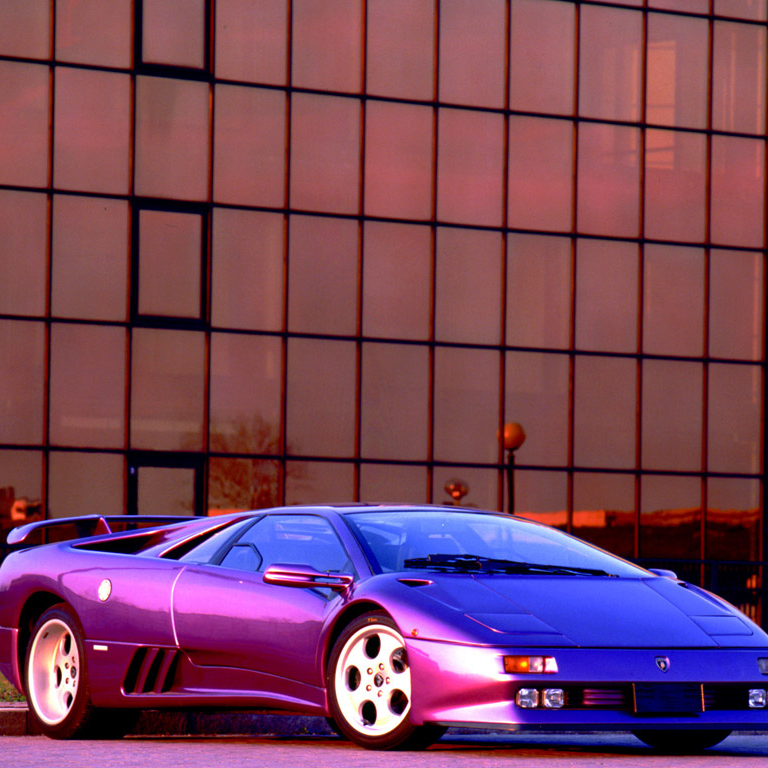
Lamborghini Diablo SE30
Years: 1994
Units: 135
Engine: 5.7L Nat Aspirated V12
Power: 525 bhp @ 7,000 rpm
Torque: 428 ft lbs @ 5,200 rpm
0-60 mph: 4.0 seconds
Top Speed: 207 mph
To celebrate Lamborghini’s 30th year as a road car maker, a special edition Diablo called the SE30 was offered in 1993. It was the fastest car Lamborghini had made: 207 mph flat out and 0-60 in 4 seconds.
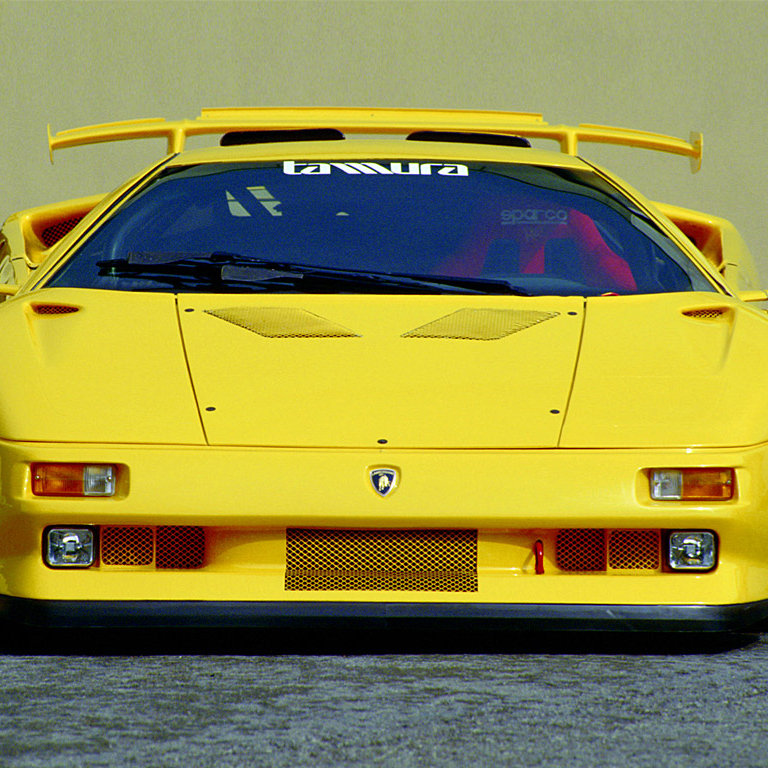
Lamborghini Diablo SE30 Jota
Years: 1994
Units: 15
Engine: 5.7L Nat Aspirated V12
Power: 595 bhp @ 7,000 rpm
Torque: 471 ft lbs @ 5,200 rpm
0-60 mph: 4.0 seconds
Top Speed: 207 mph
The “Jota” was a kit designed to convert the race-oriented SE30 into an actual circuit racer. A revised engine lid with two ducts protruding above the roofline forced air into the intake system. Engine also tweaked. Homologation special.
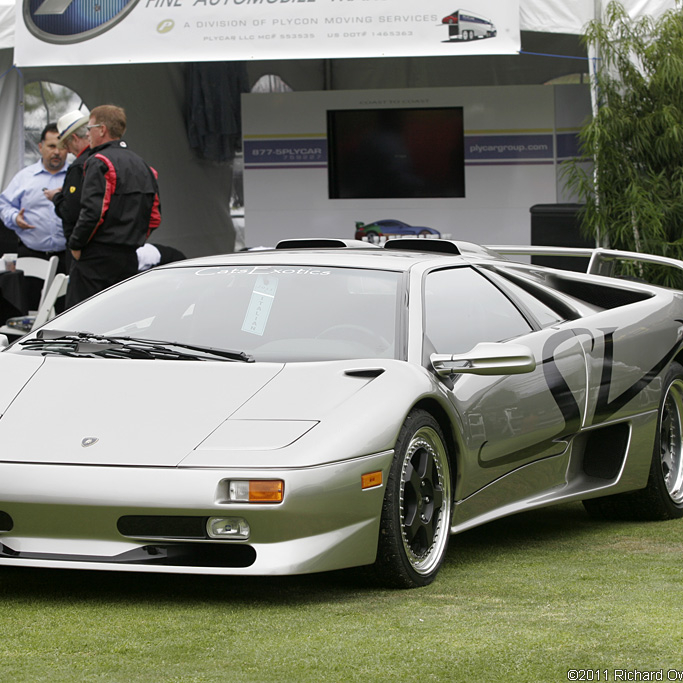
Lamborghini Diablo SV
Years: 1996 – 1999
Units: N/A
Engine: 5.7L Nat Aspirated V12
Power: 510 bhp @ 7,100 rpm
Torque: 428 ft lbs @ 5,900 rpm
0-60 mph: 3.8 seconds
Top Speed: 204 mph
The Sport Veloce (SV) version of the Diablo was a 2WD version that also befitted from the 30 Edition Jota upgrades and a light drivetrain. With a potent spec, it was used to transform the Diablo into the SVR race model.
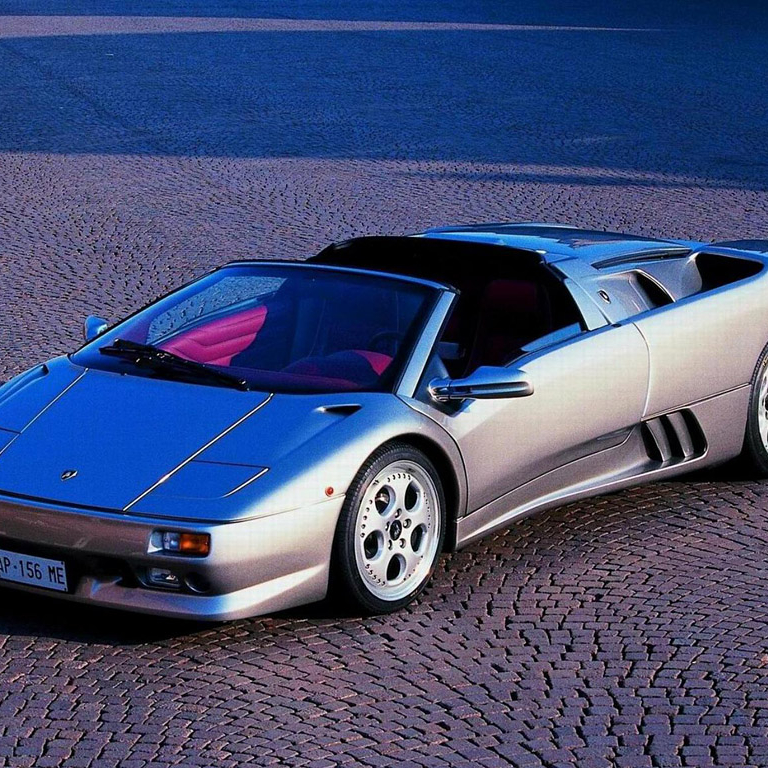
Lamborghini Diablo VT Roadster
Years: 1996 – 1998
Units: N/A
Engine: 5.7L Nat Aspirated V12
Power: 492 bhp @ 7,000 rpm
Torque: 428 ft lbs @ 5,200 rpm
0-60 mph: 4.0 seconds
Top Speed: 203 mph
The Diablo VT Roadster was introduced in 1995 and had a targa top. Besides the roof, the roadster’s body was altered from the fixed-top VT model in a number of ways. The front bumper was revised.
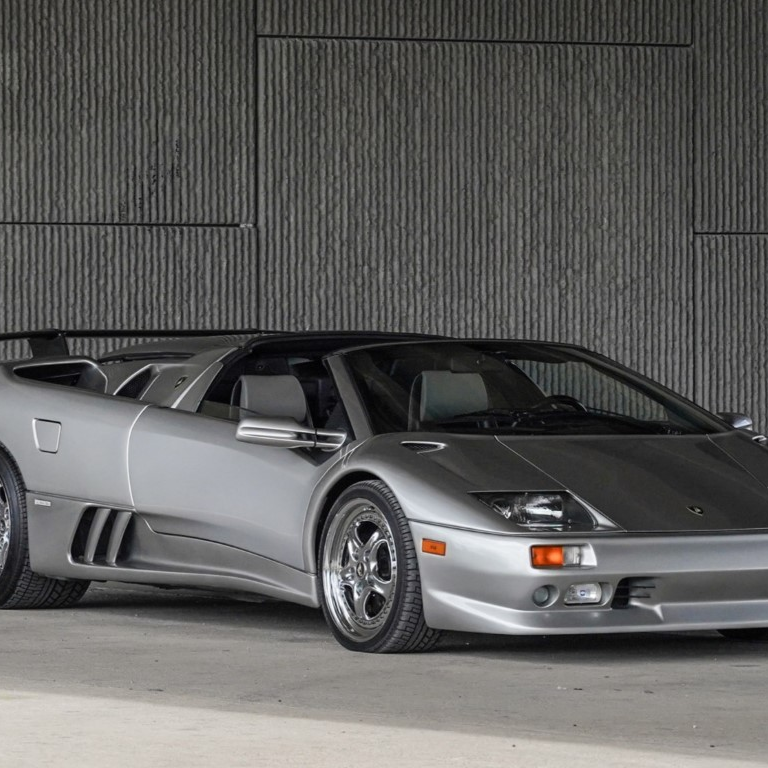
Lamborghini Diablo SV (Facelift)
Years: 1999
Units: N/A
Engine: 5.7L Nat Aspirated V12
Power: 529 bhp @ 7,100 rpm
Torque: 446.2 ft lbs @ 5,500 rpm
0-60 mph: 3.85 seconds
Top Speed: 199 mph
Diablo received a mid-cycle facelift in 1999. They simplified the model range by eliminating the “base” Diablo (SV became the new entry-level). Power and torque both got a bump and gone were the pop up lights.
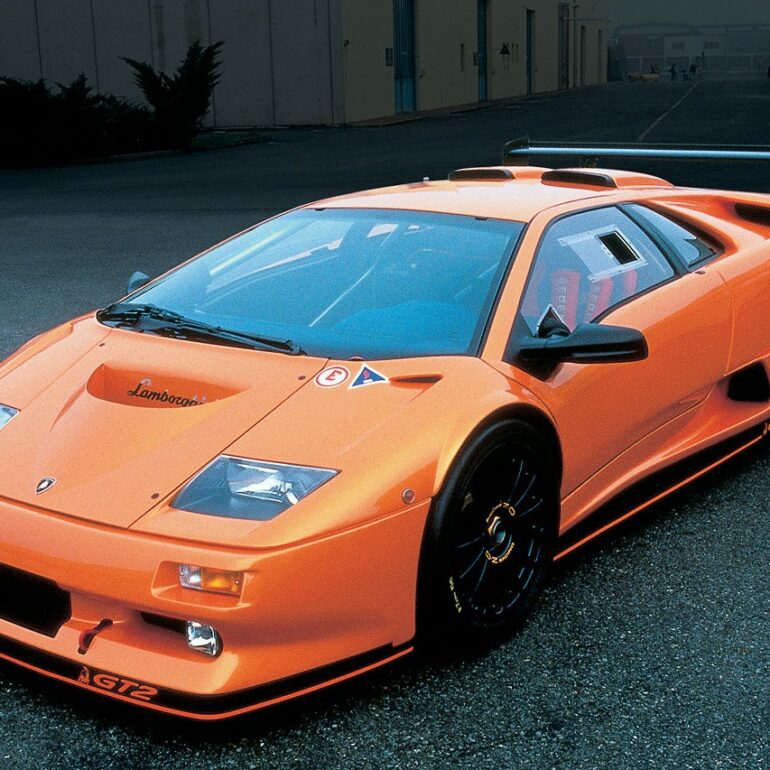
Lamborghini Diablo VT (Facelift)
Years: 1998 – 2000
Units: N/A
Engine: 5.7L Nat Aspirated V12
Power: 529 bhp @ 7,100 rpm
Torque: 446.2 ft lbs @ 5,500 rpm
0-60 mph: 3.95 seconds
Top Speed: 210 mph
The 2nd generation VT coupé received the same cosmetic and mechanical upgrades as the SV model, including the open headlamps, restyled interior, 529 hp V12 engine, and ABS.
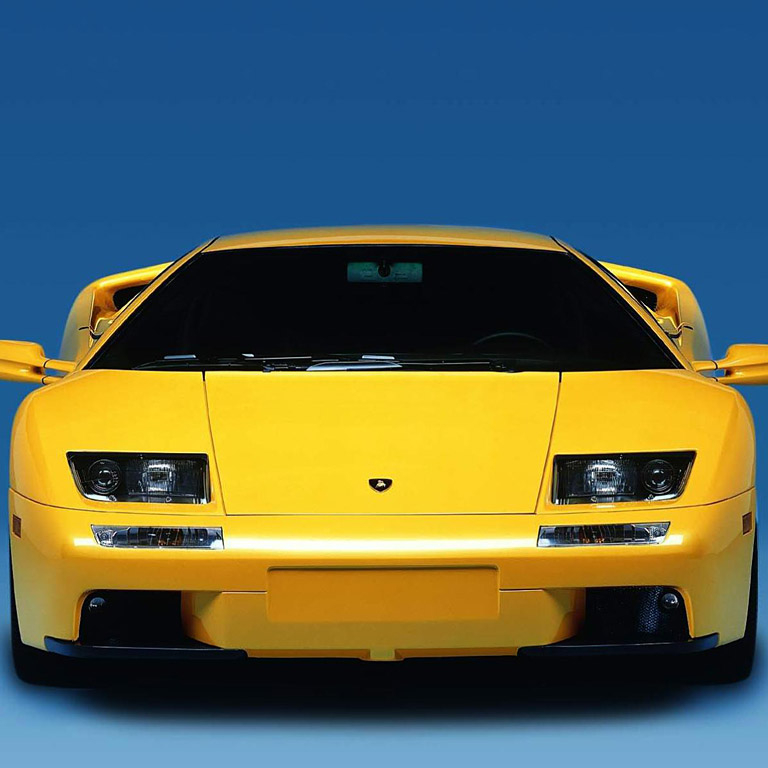
Diablo VT Roadster (Facelift)
Years: 1998 – 2000
Units: N/A
Engine: 5.7L Nat Aspirated V12
Power: 529 bhp @ 7,100 rpm
Torque: 446.2 ft lbs @ 5,500 rpm
0-60 mph: 3.95 seconds
Top Speed: 208 mph
The engine lid was changed substantially in order to vent properly when the roof panel was covering. Roadster also featured revised wheels. The air intakes on top/sides were made larger than the coupe Diablos.
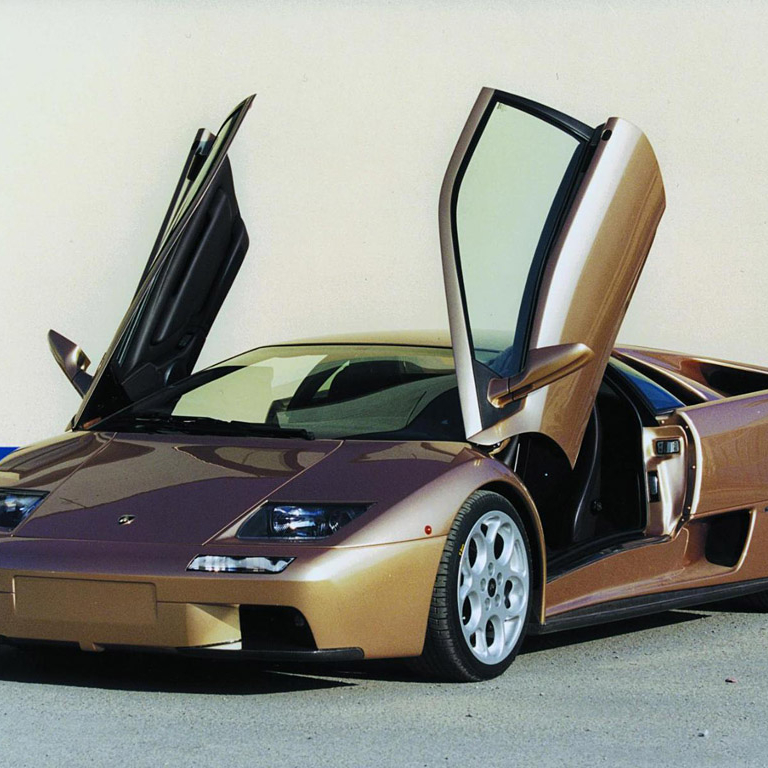
Lamborghini Diablo VT (6.0) SE
Years: 2001
Engine: 6.0L Nat Aspirated V12
Power: 550 bhp @ 7,100 rpm
Torque: 457 ft lbs @ 5,500 rpm
0-60 mph: 3.8 seconds
Top Speed: 205 mph
The aim of this special edition was to emphasise the Lamborghini Diablo in two exclusive colors: Oro Elios & Marrone Eklipsis. 42 SE’s were built, 20 in each color. Other upgrades happened too.
Lamborghini Diablo Concept Cars & Prototypes
Below is a list of the Lamborghini Diablo Special Editions. They were more prototypes than anything else.
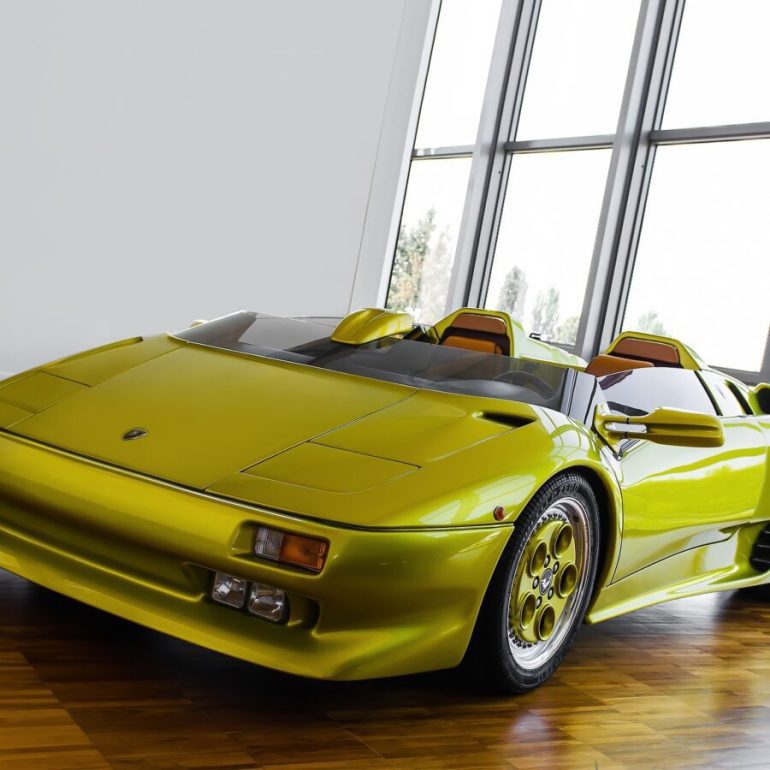
Lamborghini Diablo Roadster Concept
Years: 1992
Units: 1
Engine: N/A
Power: N/A
Torque: N/A
0-60 mph: N/A
Top Speed: N/A
On the 1992 Geneva Auto Show, Lamborghini presented a prototype of an open-top version of their flagship, the Diablo Roadster, naturally the roof was removed and the chassis was altered to cope with this, but there were also some other changes which would make their way to the Diablo and Diablo VT production model.
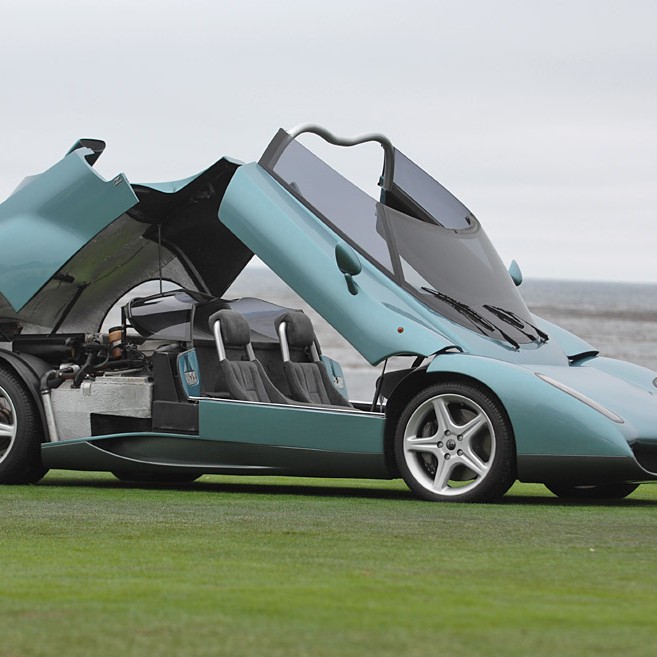
Lamborghini Zagato Raptor
Years: 1996
Units: 1
Engine: 5.7L Nat Aspirated V12
Power: 492.0 bhp @ 7000 rpm
Torque: 427.8 ft lbs @ 5200 rpm
0-60 mph: 3.9 seconds
Top Speed: 205 mph
The Zagato Raptor was designed in conjunction with Lamborghini SpA as a limited-production model intended to bridge the gap between the Diablo and its subsequently stillborn successor, the Lamborghini Canto. Although the model never went into production, the stunning one-off Raptor concept was much lighter than a Diablo.
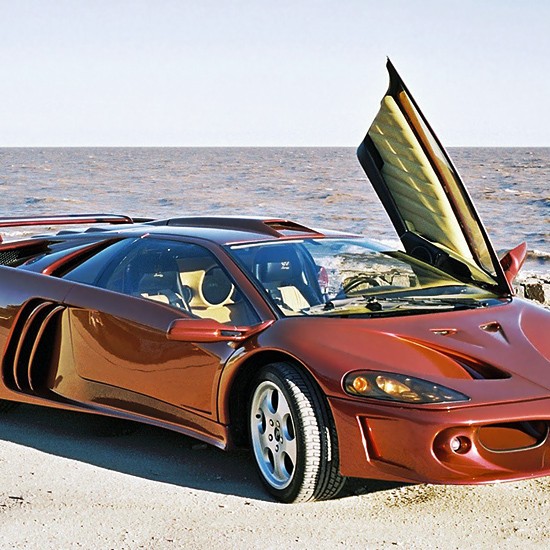
Lamborghini Coatl
Years: 1997
Units: 1
Engine: 6.3L Nat Aspirated V12
Power: 635 bhp
Torque: N/A
0-60 mph: 3.54 seconds
Top Speed: 239 mph
The Lamborghini Alar was a concept for a mid-engined sports car to be produced by Lamborghini Latino America. A unit was rumored to cost $750,000 each. The Alar was heavily based on the Diablo especially in the areas of chassis and engine. Other components are made locally by the company.
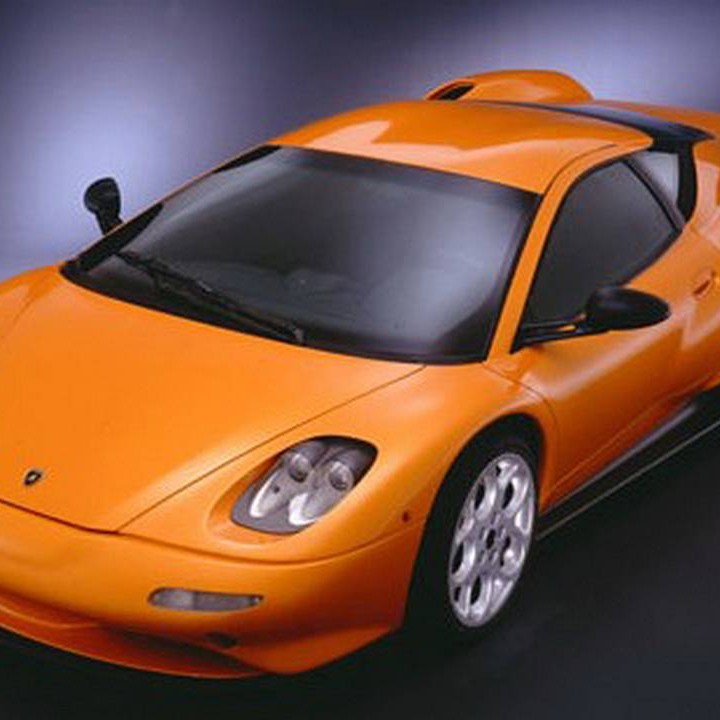
Lamborghini P147 Canto
Years: 1998
Units: 1
Engine: V12
Power: 610 bhp @ 7,500 rpm
Torque: N/A
0-60 mph: N/A
Top Speed: 217 mph
In the mid 90's before the German acquisition of Lamborghini in 1998 by Audi, there was uncertainty surrounding the proposed successor to the Diablo. There are two Lamborghini P147 concepts put forward, the Zagato designed Canto and the Gandini designed Acosta. Both cars share the P147 name.
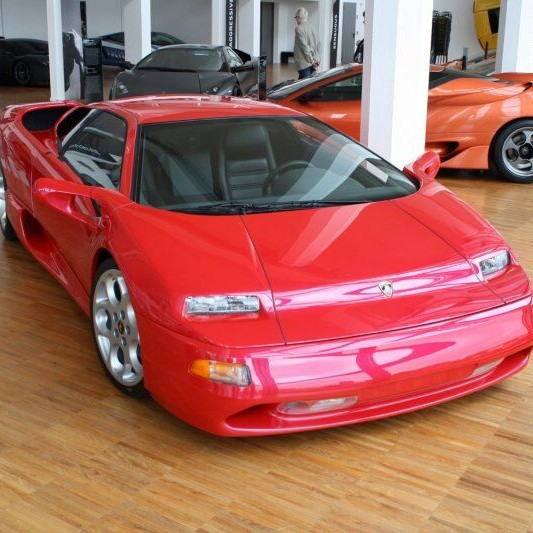
Lamborghini P147 Acosta
Years: 1998
Units: 1
Engine: V12
Power: 610 bhp @ 7,500 rpm
Torque: N/A
0-60 mph: N/A
Top Speed: 217 mph
This concept, proposed by Marcelo Gandini as the successor to the Diablo, was presented is parallel to the prototype conceived by Zagato. This model was not at all appreciated. As a result, no prototype of this one-off concept was built. Like the Zagato car, it also shared the P147 code name. It looks like curvier Diablo to us.
Lamborghini Diablo Race Cars: In Depth Guides
Let's Go Racing
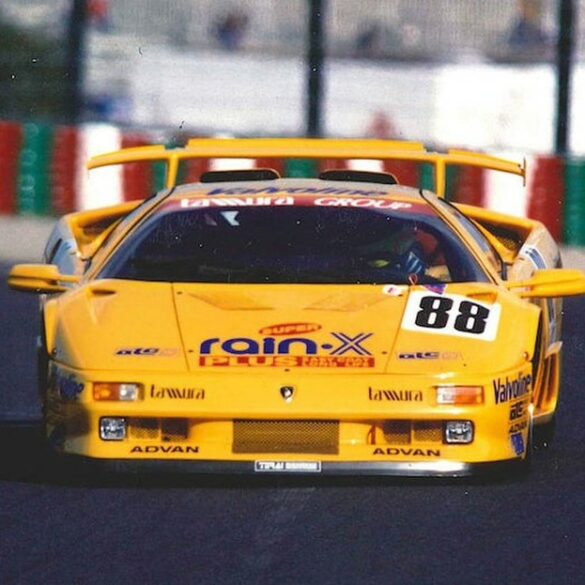
Lamborghini Diablo Jota
Years: 1995 - 1996
Units: 3
Engine: 5.7L Nat Aspirated V12
Power: N/A
Torque: N/A
0-60 mph: N/A
Top Speed: N/A
The first Diablo to hit the track in major capacity would be the Diablo Jota. A beast in it's own right, unfortunately it had no chance against the already established pedigree of the JGTC superstars like the Supra and Skyline. The good news is that the Diablo Jota race car means we got the production model that all 15 people can enjoy. :(
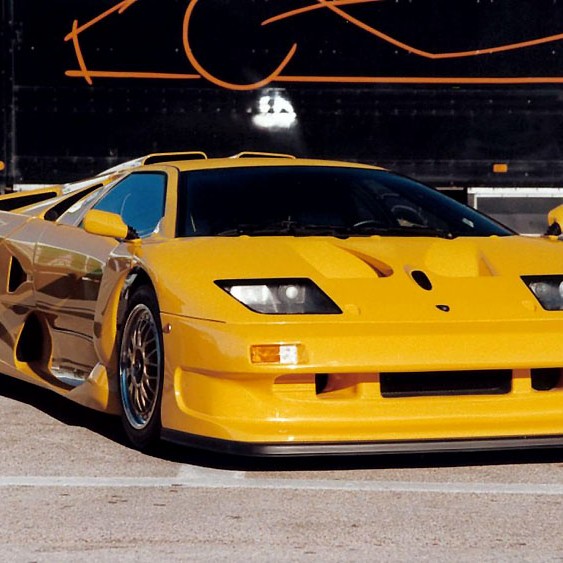
Lamborghini Diablo GT1 Stradale
Years: 1997
Units: 2
Engine: 6.0L Nat Aspirated V12
Power: 665 bhp @ 7,500 rpm
Torque: 506 ft lbs @ 5,500 rpm
0-60 mph: N/A
Top Speed: N/A
During 1996, Automobili Lamborghini SpA contacted SAT in France to design and build a race version of the Diablo to be able to compete in the GT championships, much like the Porsche GT1 from 1997, this was a car that needed to be based on a production car, but with a completely race oriented setup.
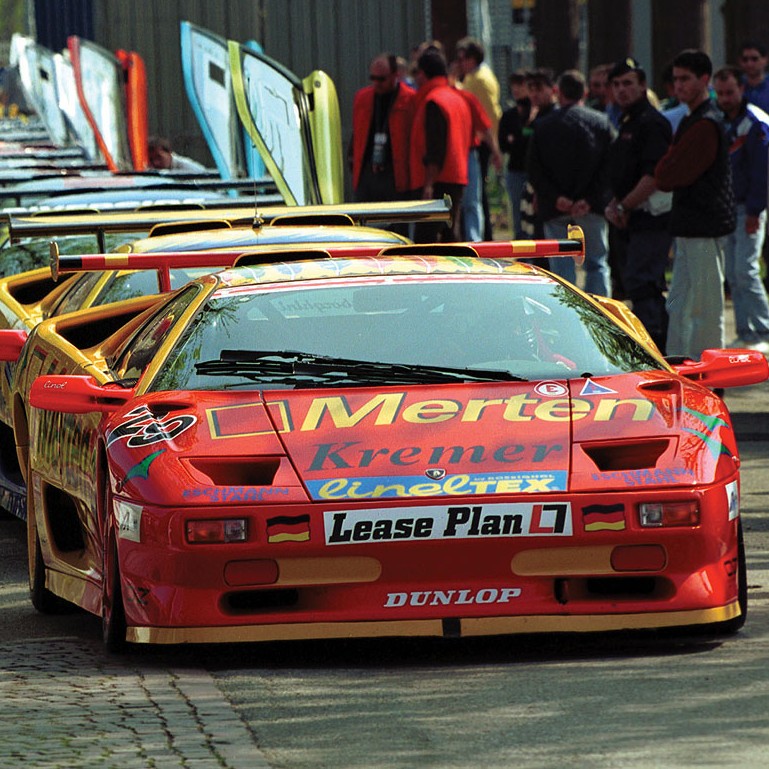
Lamborghini Diablo SV-R
Years: 1996
Units: 31
Engine: 5.7L Nat Aspirated V12
Power: 540 bhp @ 7,100 rpm
Torque: 441 ft lbs @ 5,800 rpm
0-60 mph: 3.7 seconds
Top Speed: 205 mph
The Diablo SV-R was the first Lamborghini that was officially entered into racing by the factory, although the actual drivers weren't factory pilots, it was still the closest thing to a race car Automobili Lamborghini SpA ever built, beside the Formula one engines they built. Take a standard Diablo SV and strip out everything not needed on a track.

Lamborghini Diablo GT2
Years: 2000 - 2002
Units: N/A
Engine: 6.0L Nat Aspirated V12
Power: 600 bhp
Torque: N/A
0-60 mph: 3.9 seconds
Top Speed: N/A
Following the success of the Diablo SV-R, Lamborghini decided to enter the Diablo in GT2 class racing. A new car was developed based on the Diablo SV which later became the basis for the infamous Diablo GT and the Diablo GTR, the car was called the Diablo GT2 and it featured a detuned variant of the 6.0 L V12 engine used in the Diablo GT1 Stradale. The car was given an update sometime in 2002 and was known as the Diablo GT2 Evoluzione.
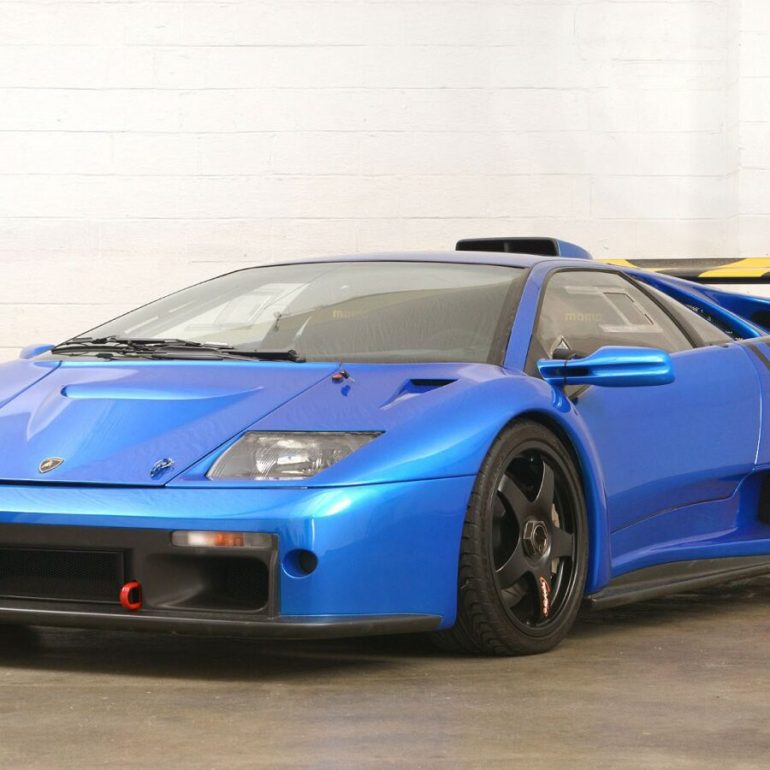
Lamborghini Diablo GTR
Years: 2000
Units: 30
Engine: 5.7L Nat Aspirated V12
Power: 529 bhp @ 7,100 rpm
Torque: 446.2 ft lbs @ 5,500 rpm
0-60 mph: 3.9 seconds
Top Speed: 208 mph
Only 30 were built for Lamborghini's one-make Supertrophy series–a precursor to today's Super Trofeo series. The GTR came equipped with a 590-hp 6.0-liter version of Lamborghini's famous V12 hooked up to a five-speed manual gearbox. Lamborghini stiffened and added an integrated roll cage to the Diablo's frame for the GTR, and bolted a big rear wing directly to the chassis. The interior was stripped out and fitted with all the safety equipment.
Lamborghini Diablo Specs & Performance
A summary of production Diablo specifications and performance numbers.
“The four-wheel-drive system brought an added level of security to the driving experience that wasn’t there before. It’s still a beast, but just one that’s slightly easier to tame.”
Top Gear


